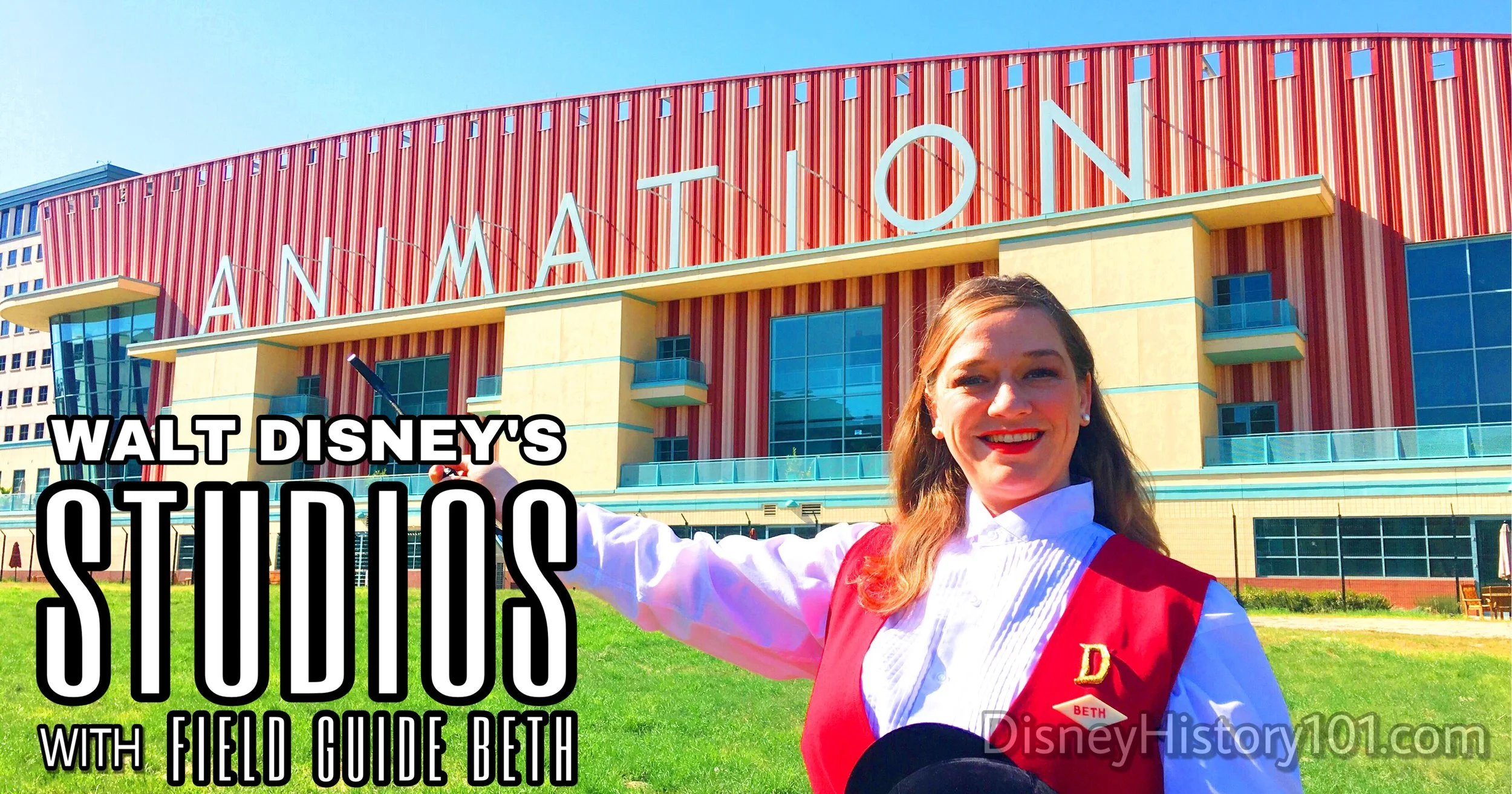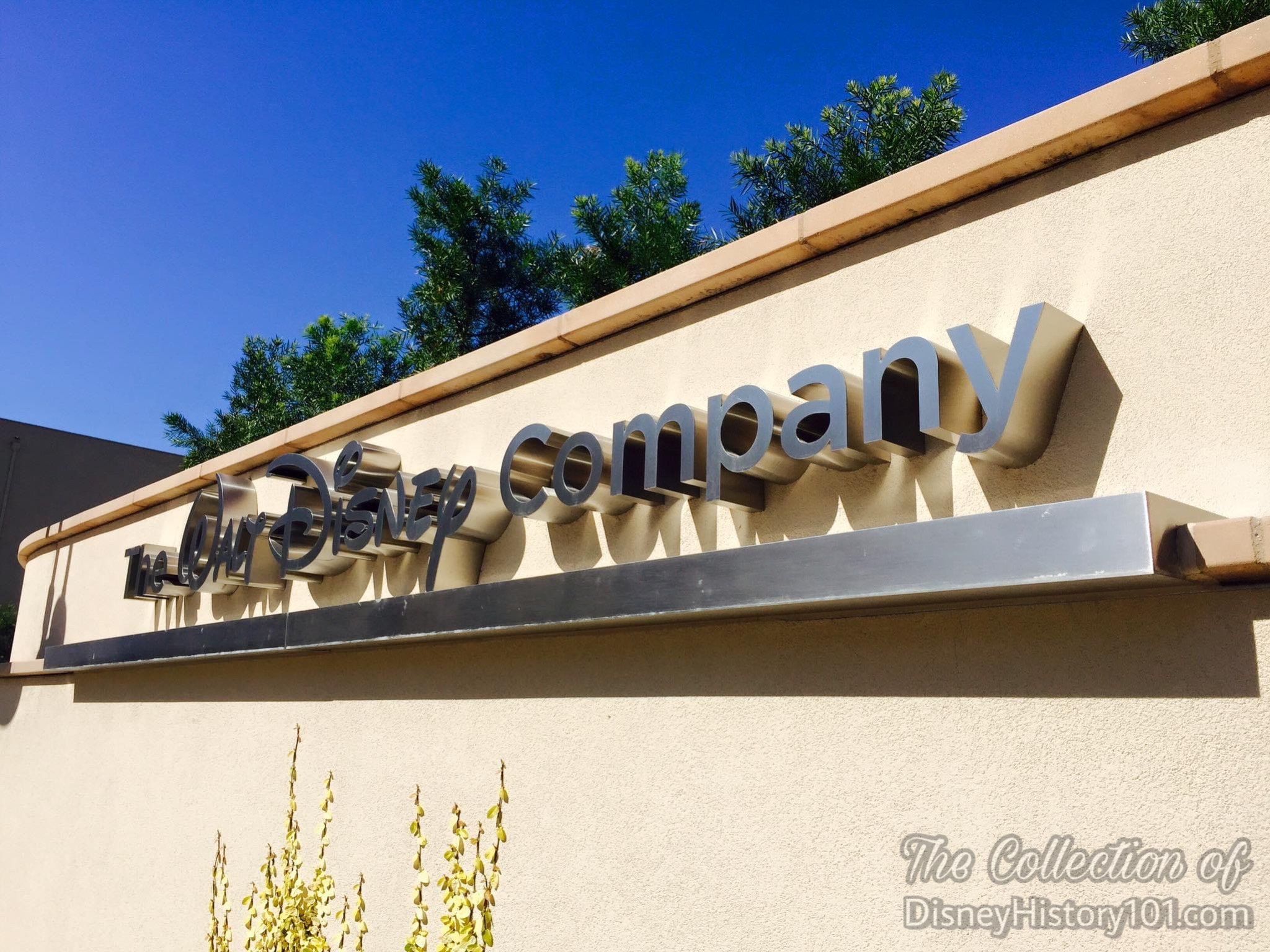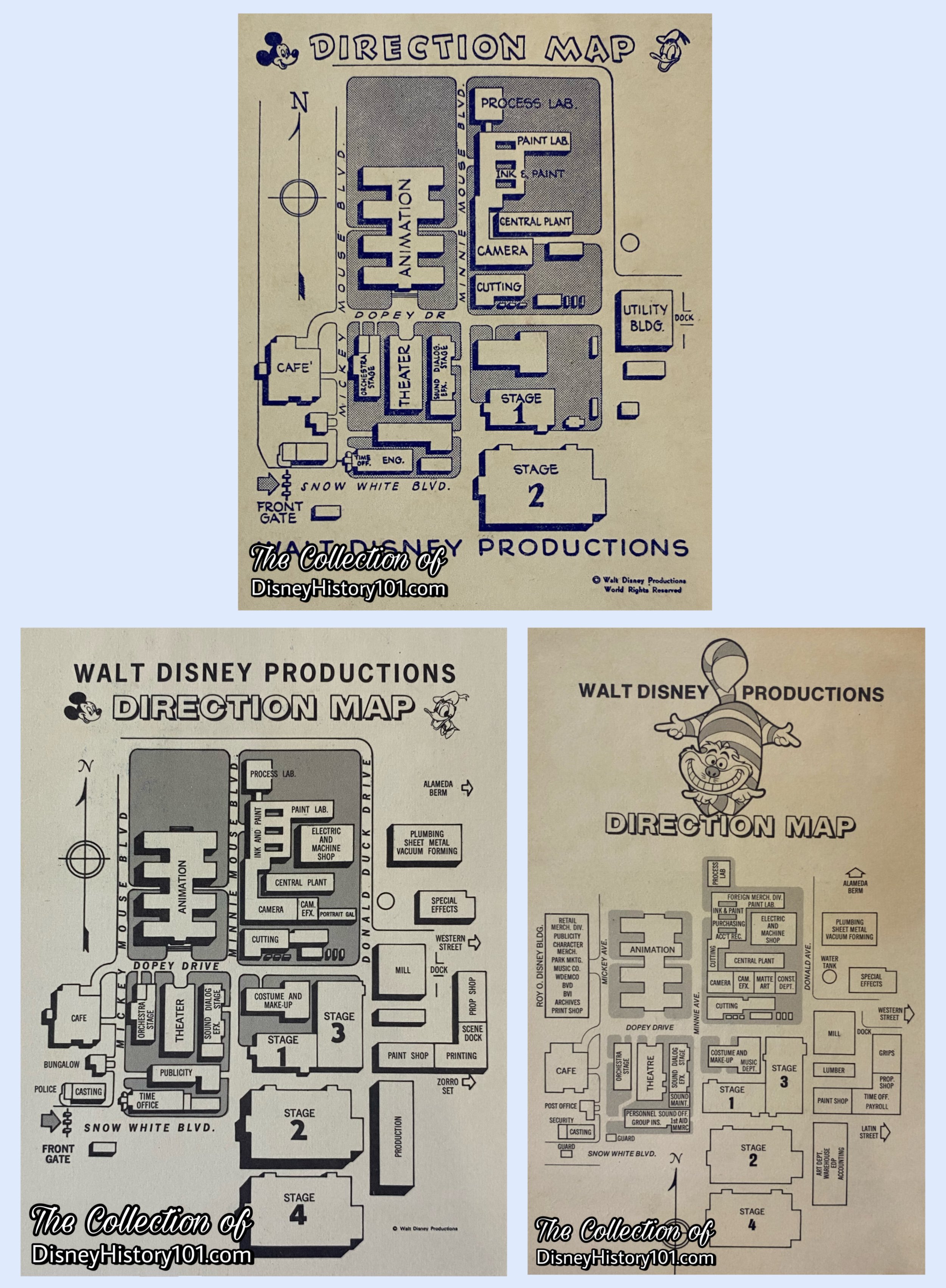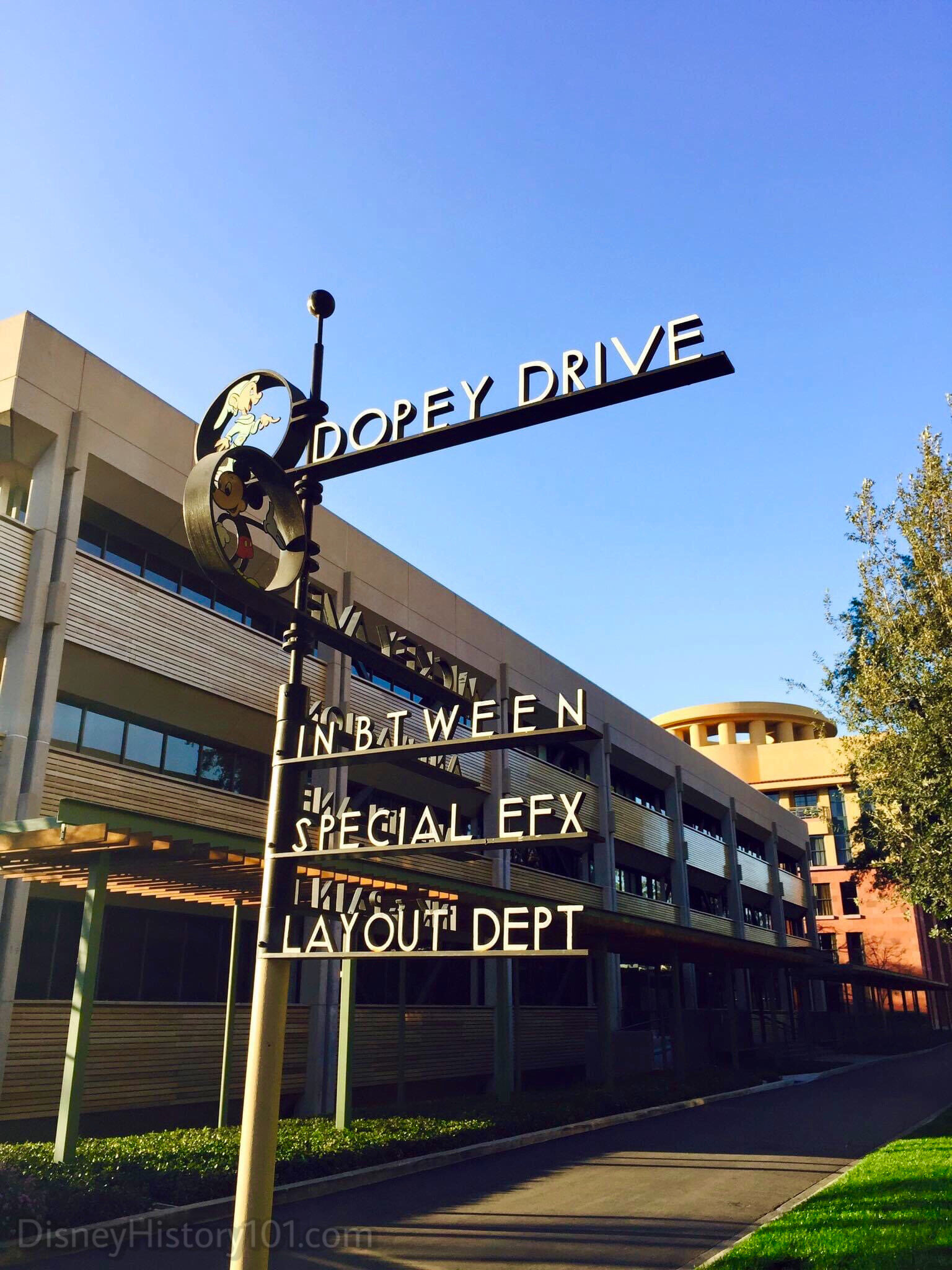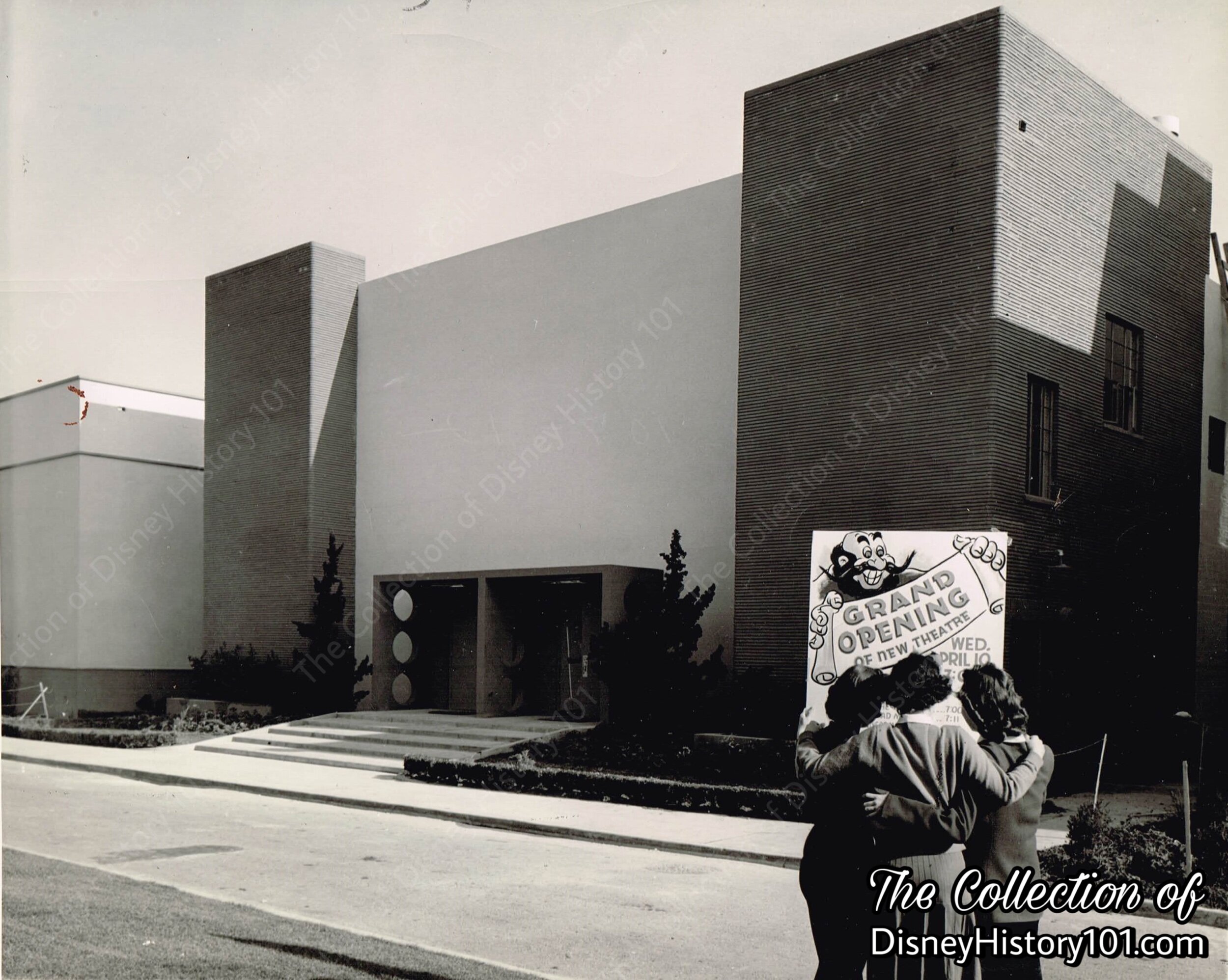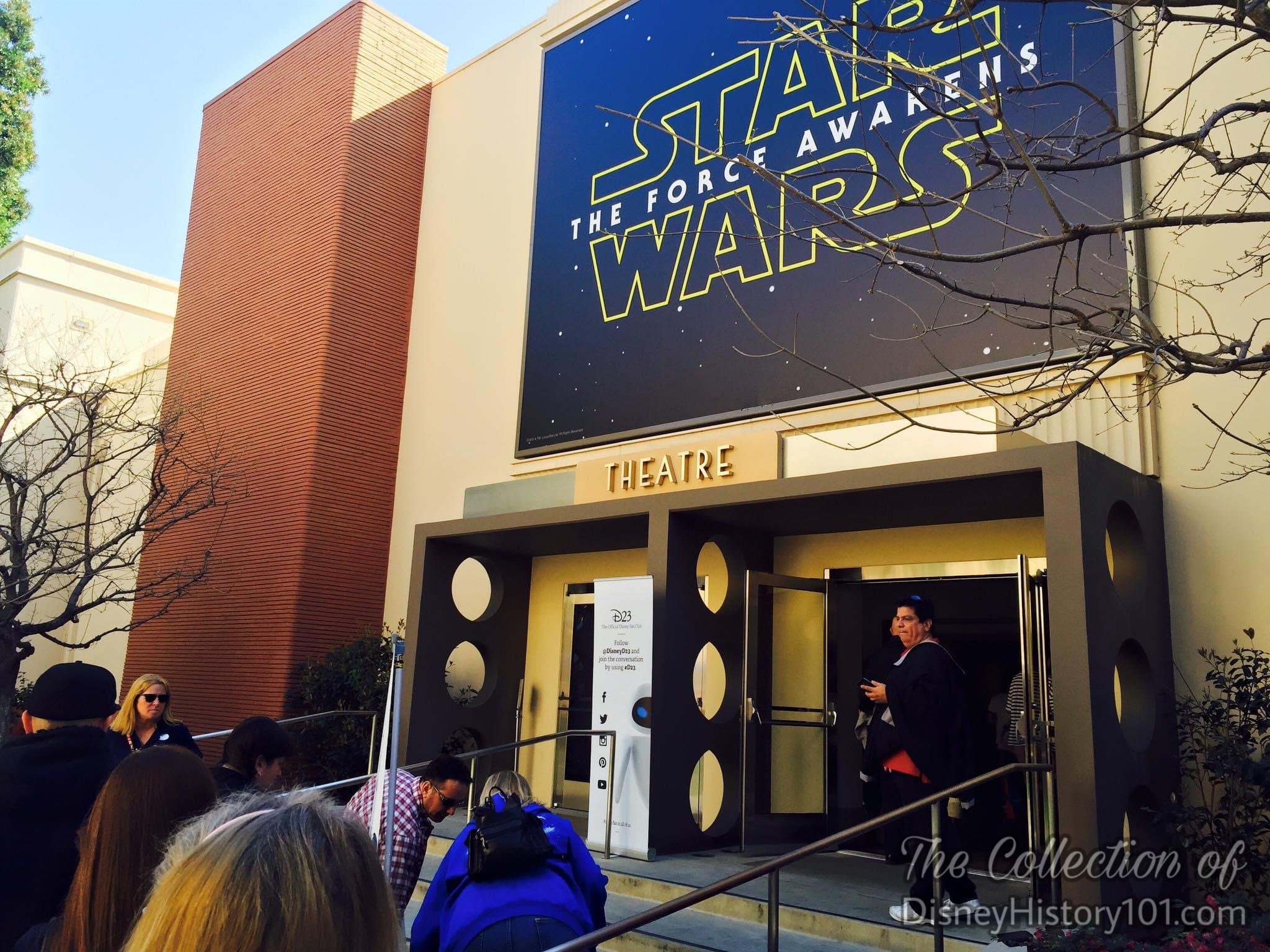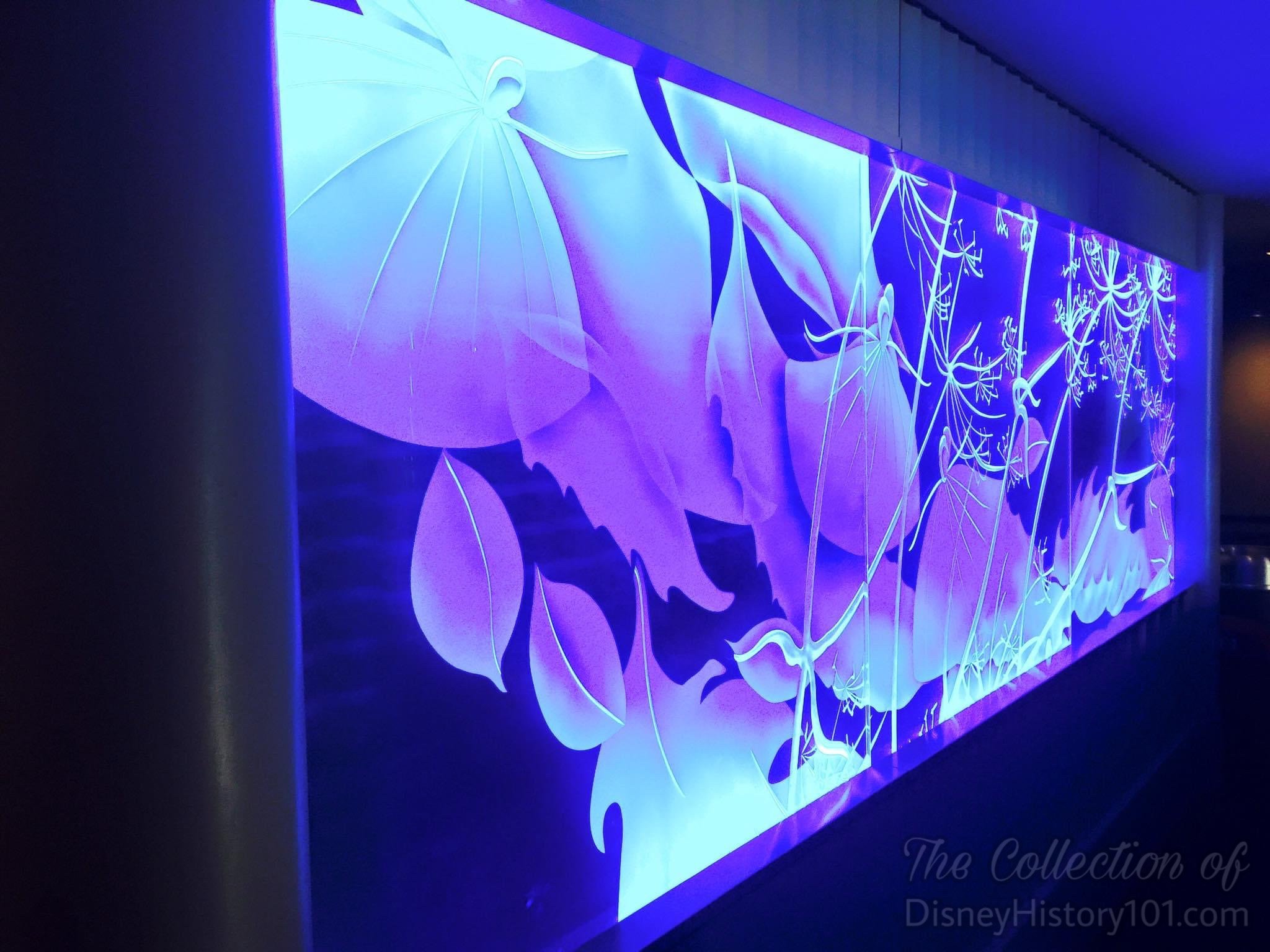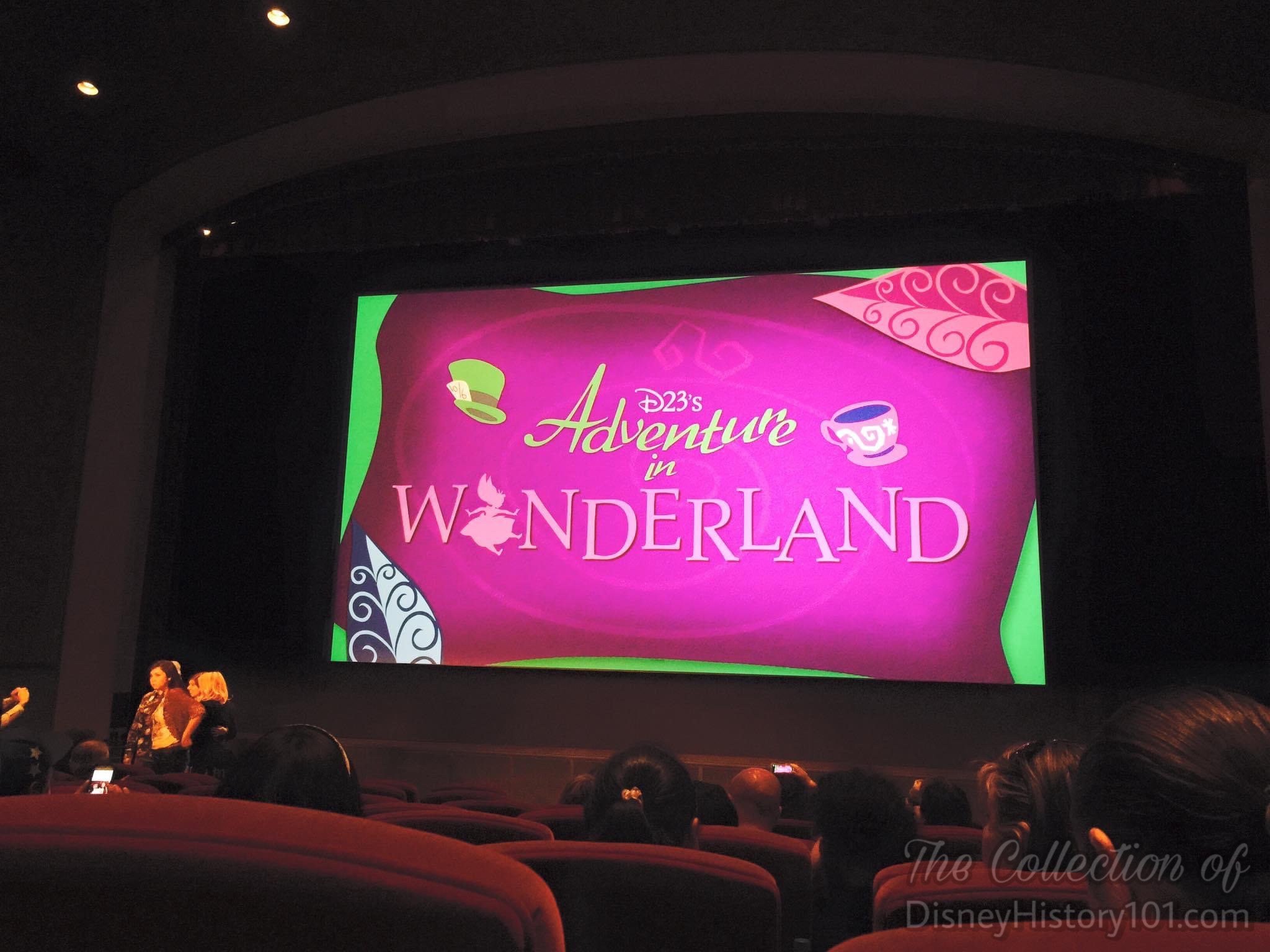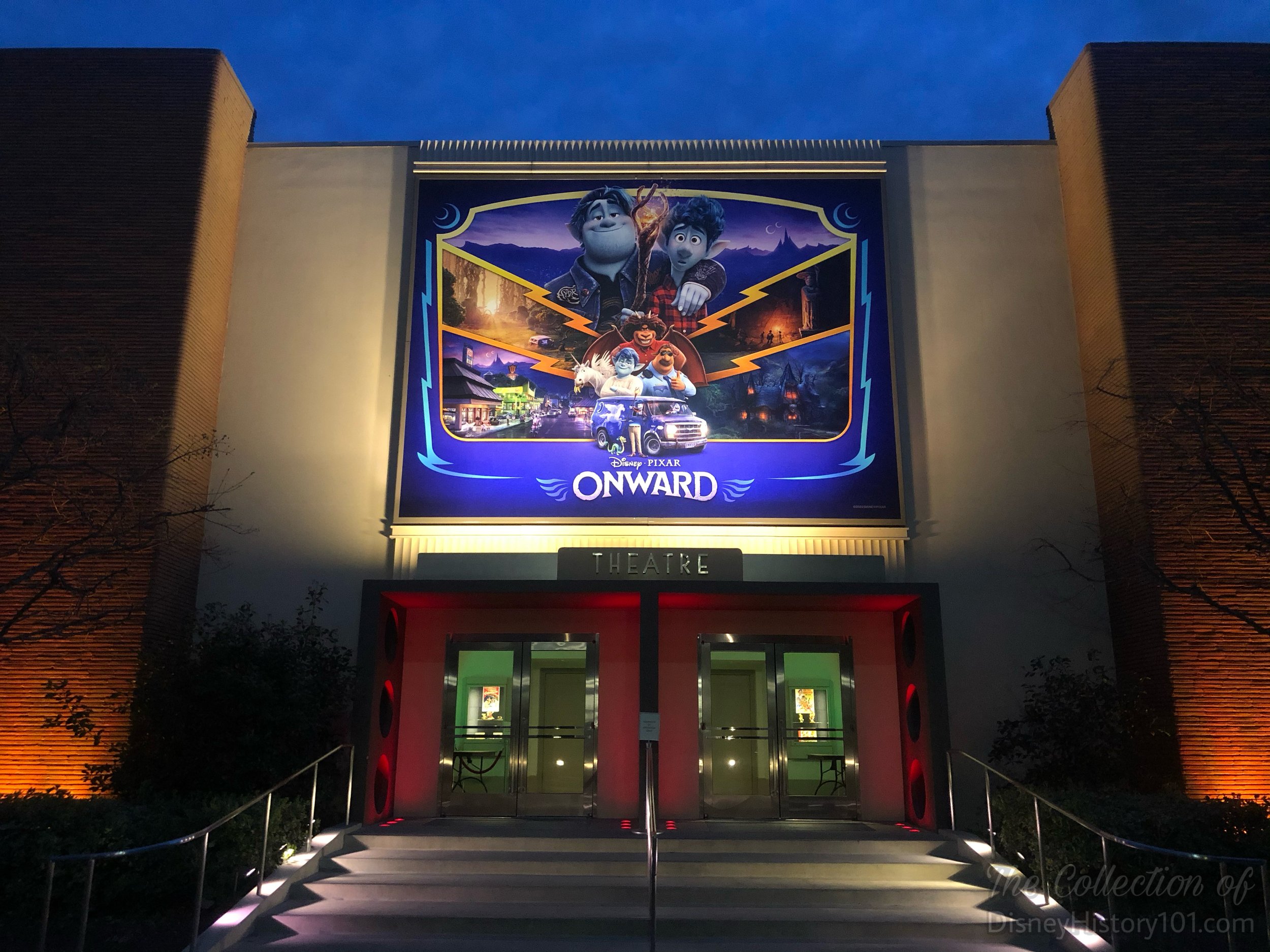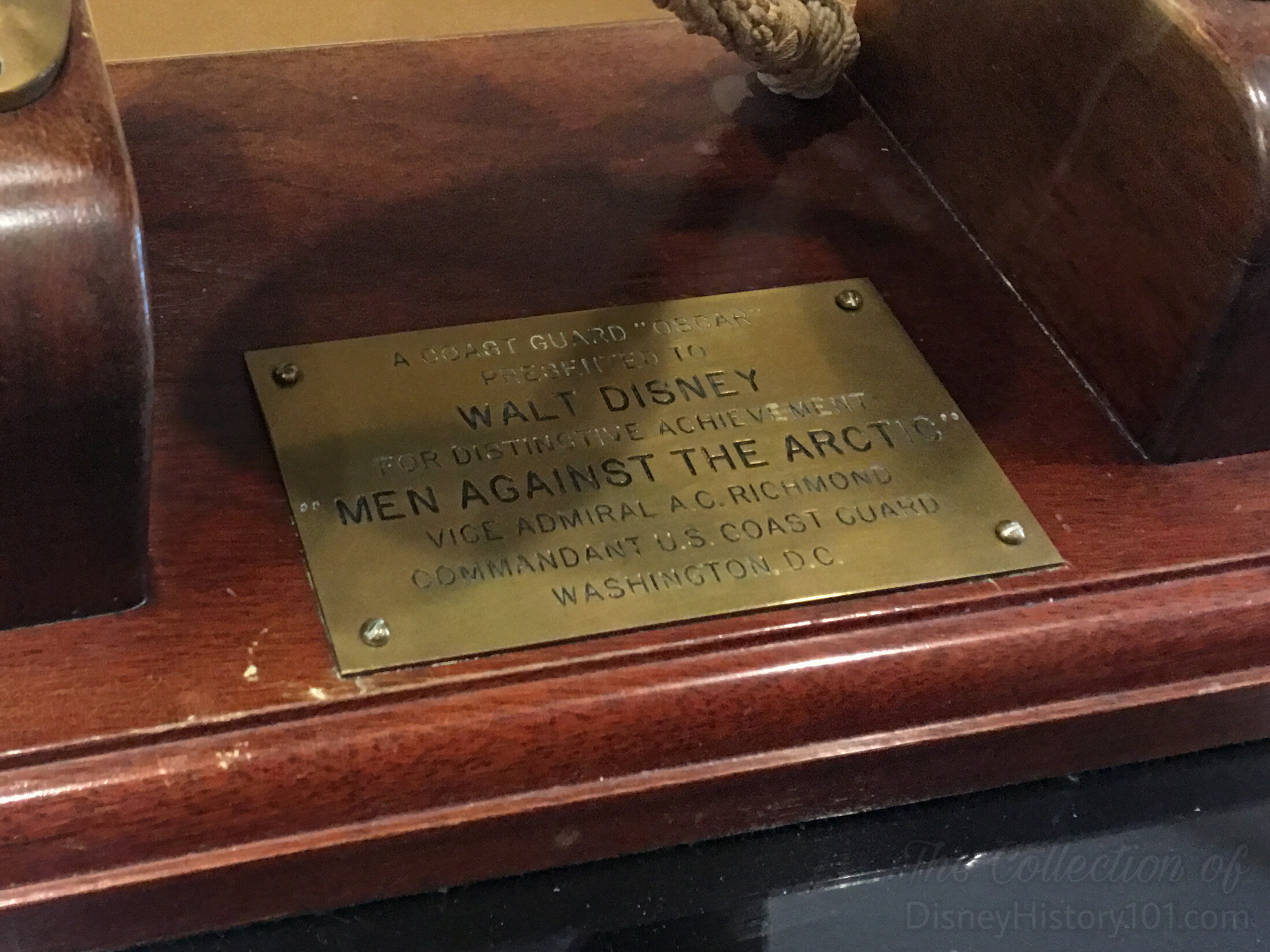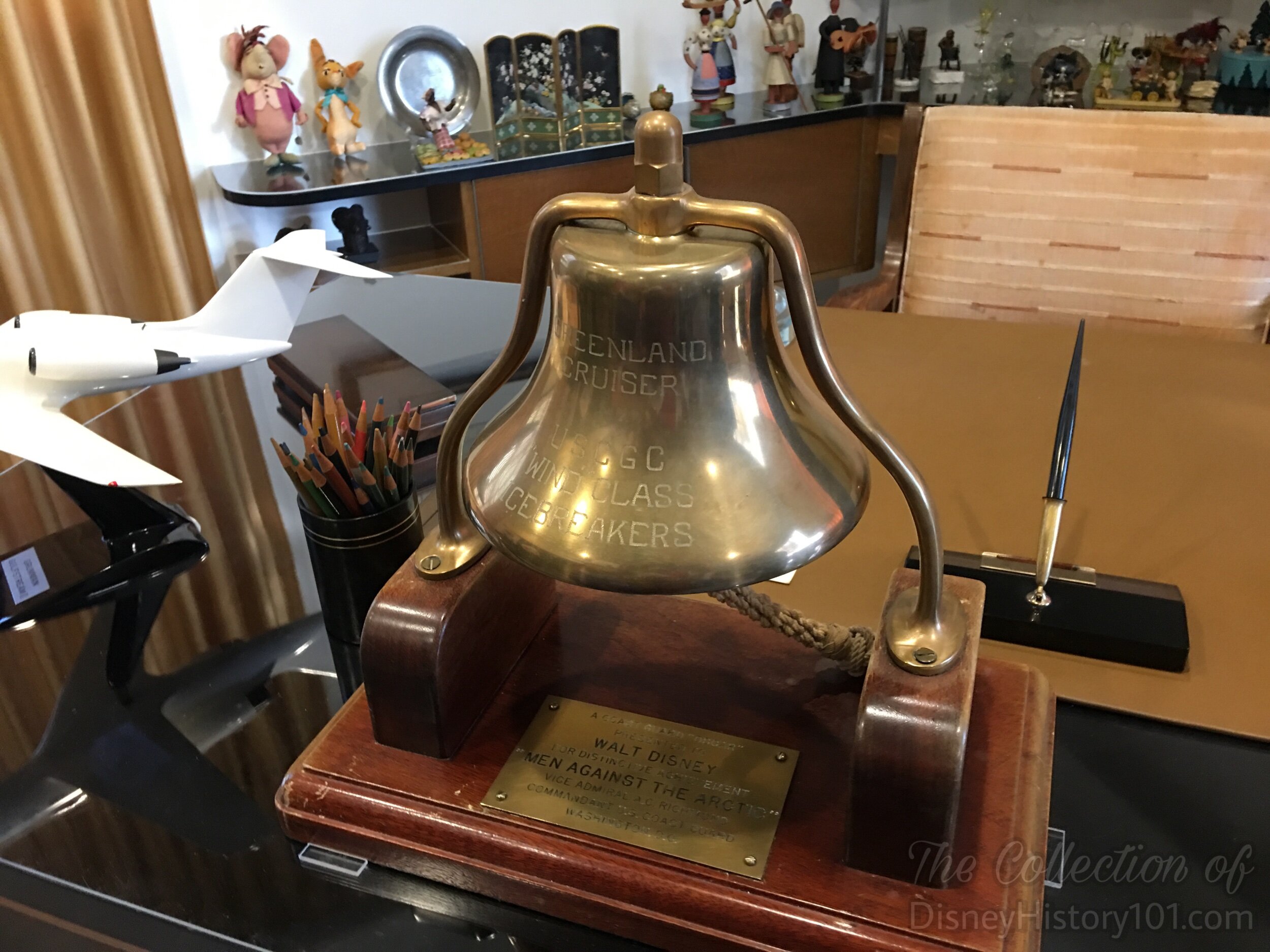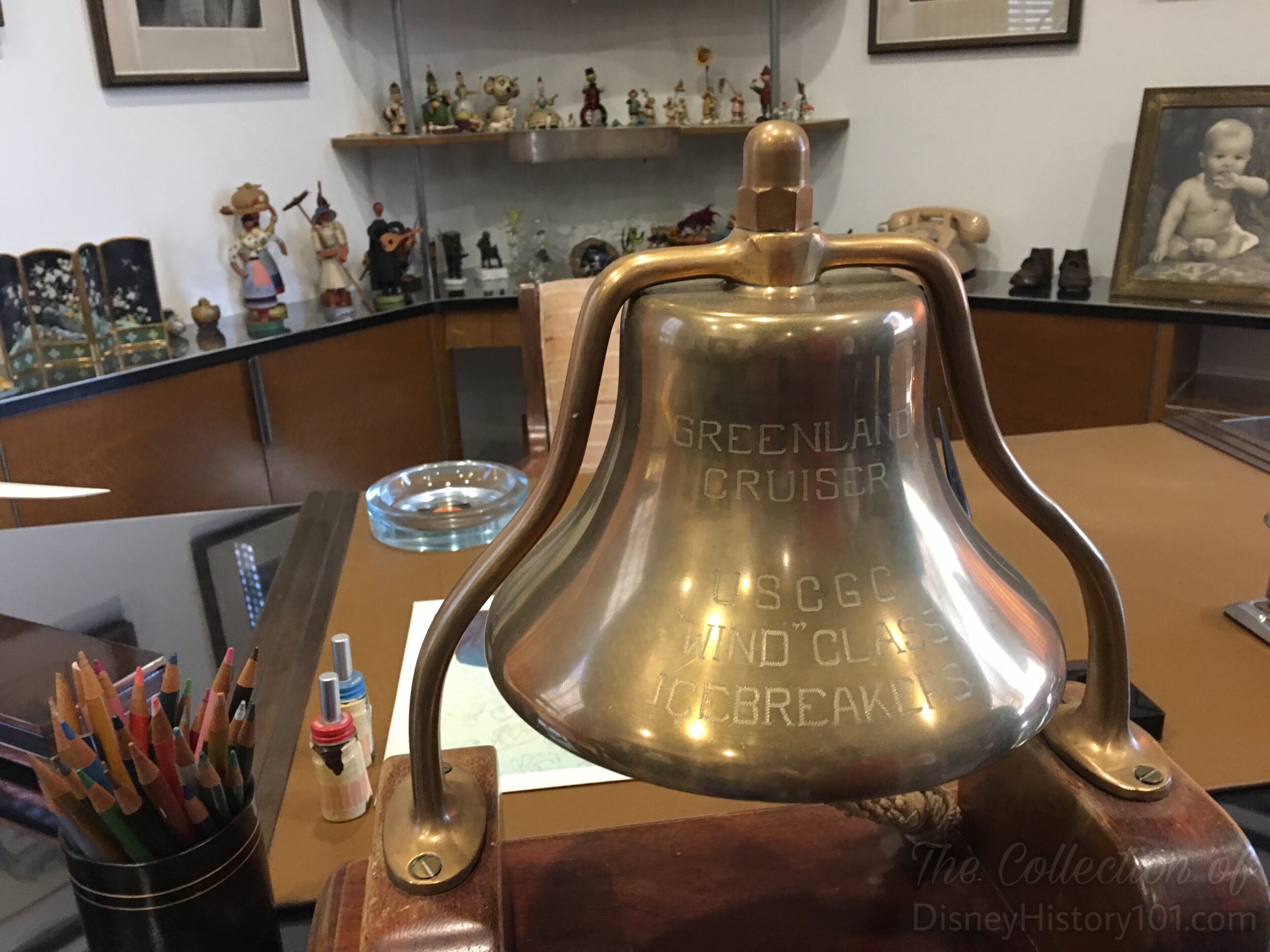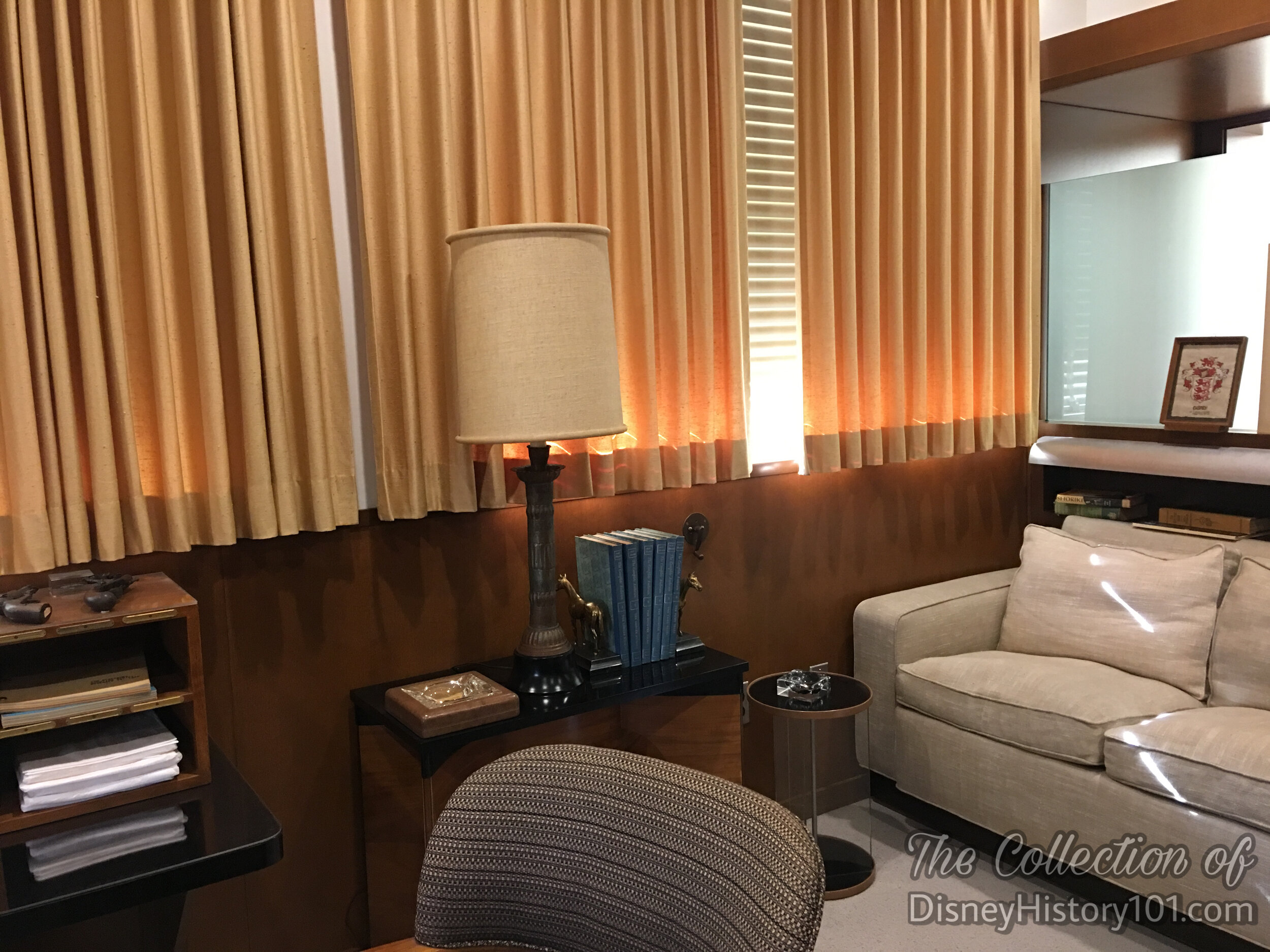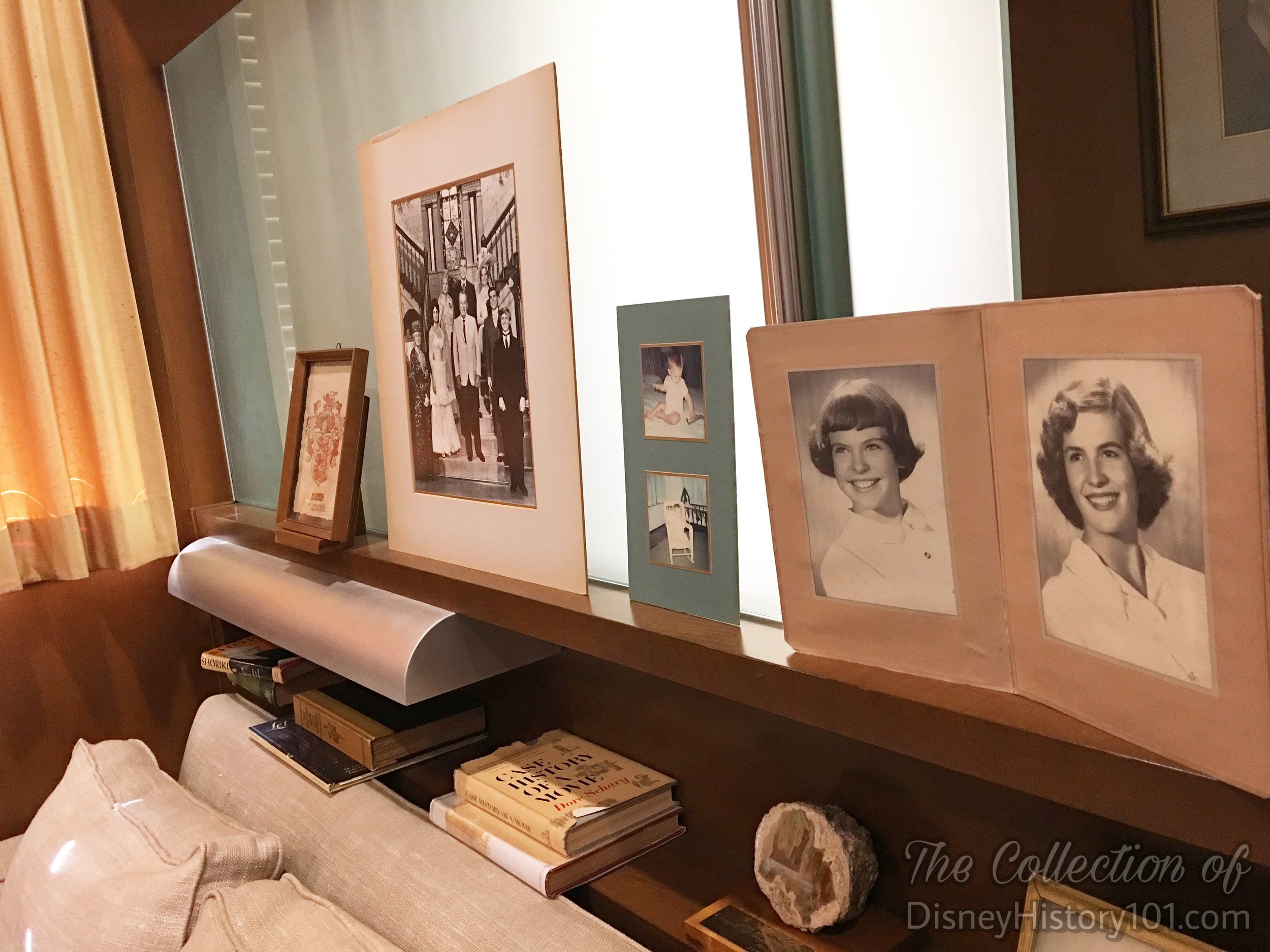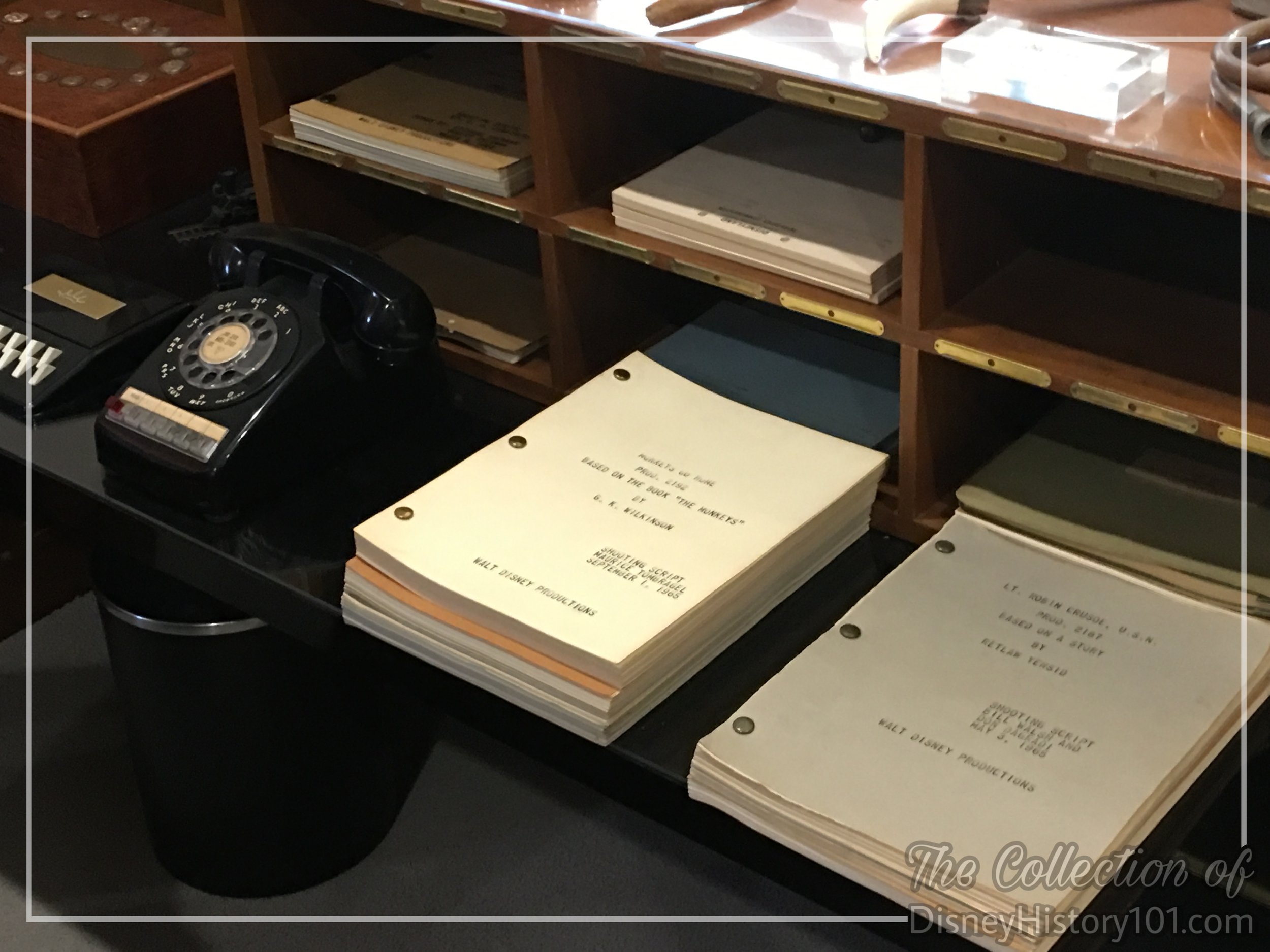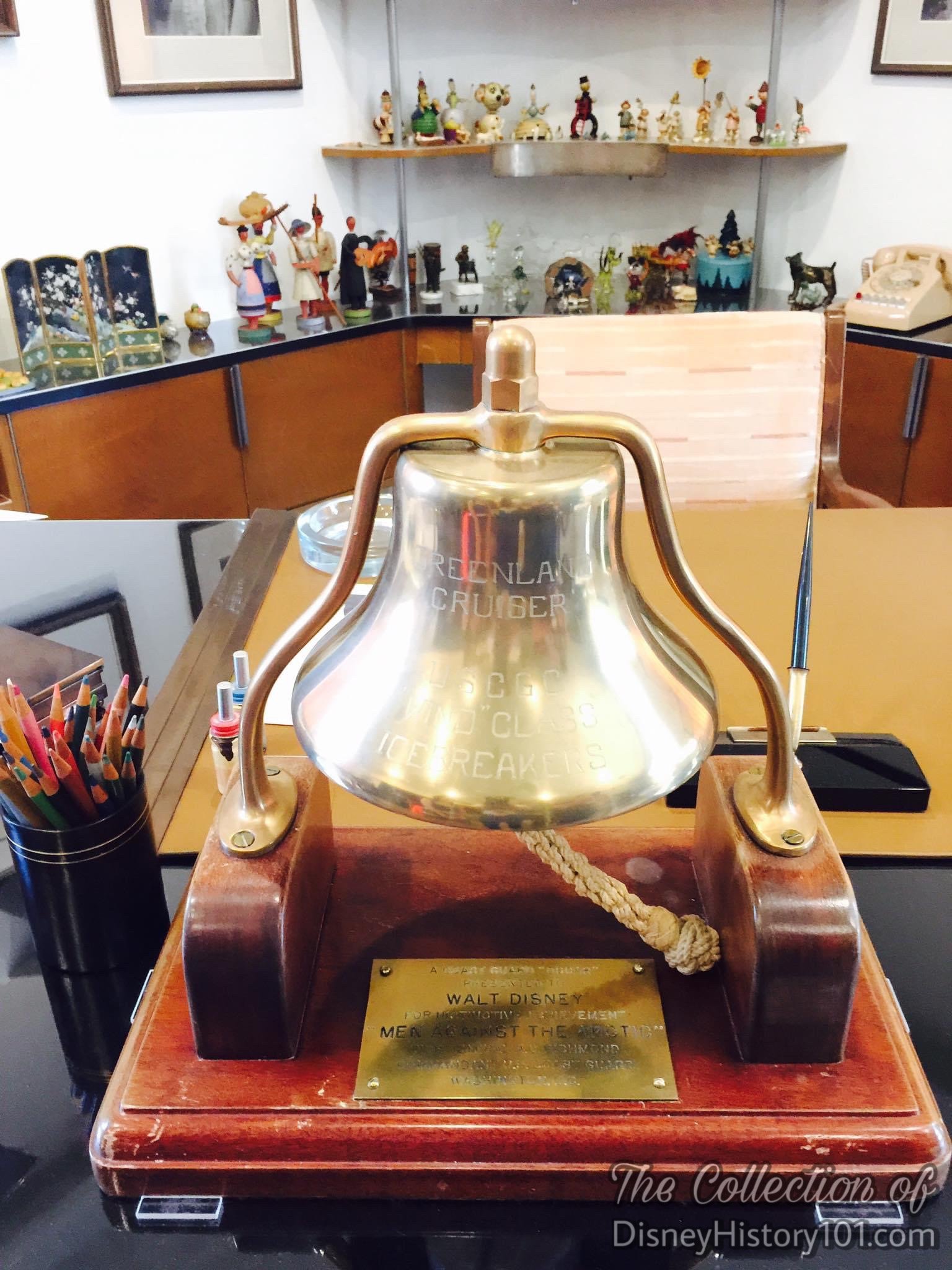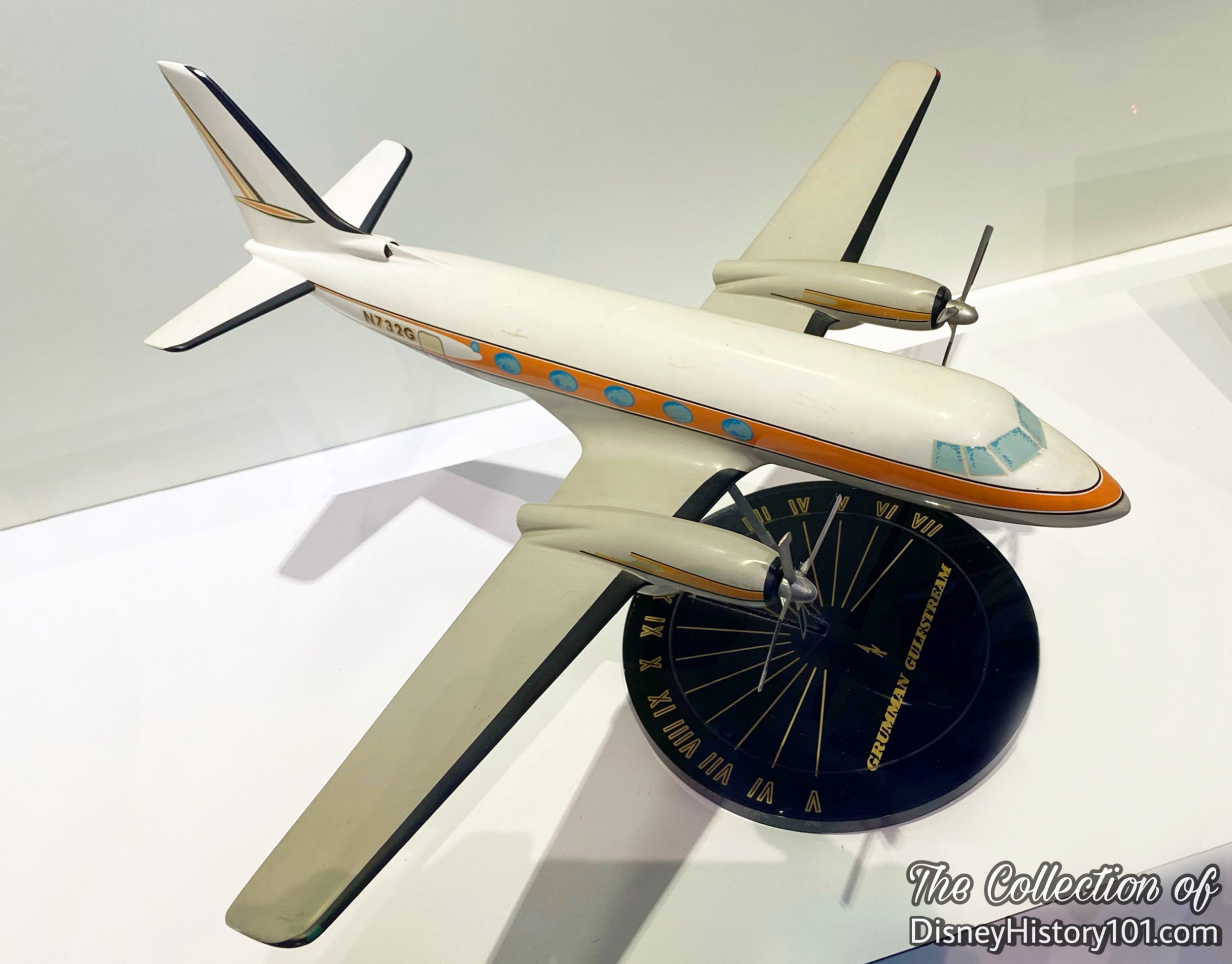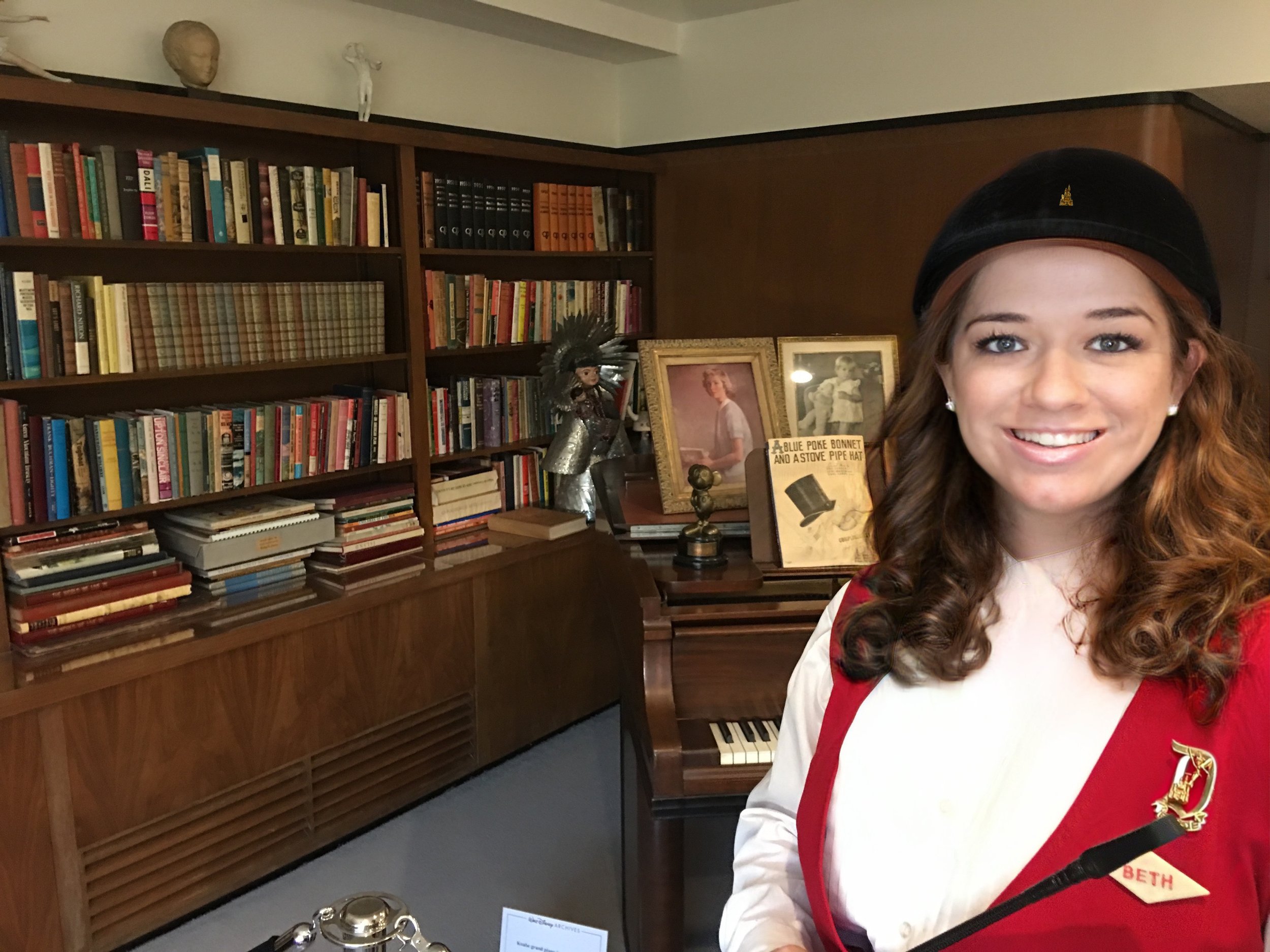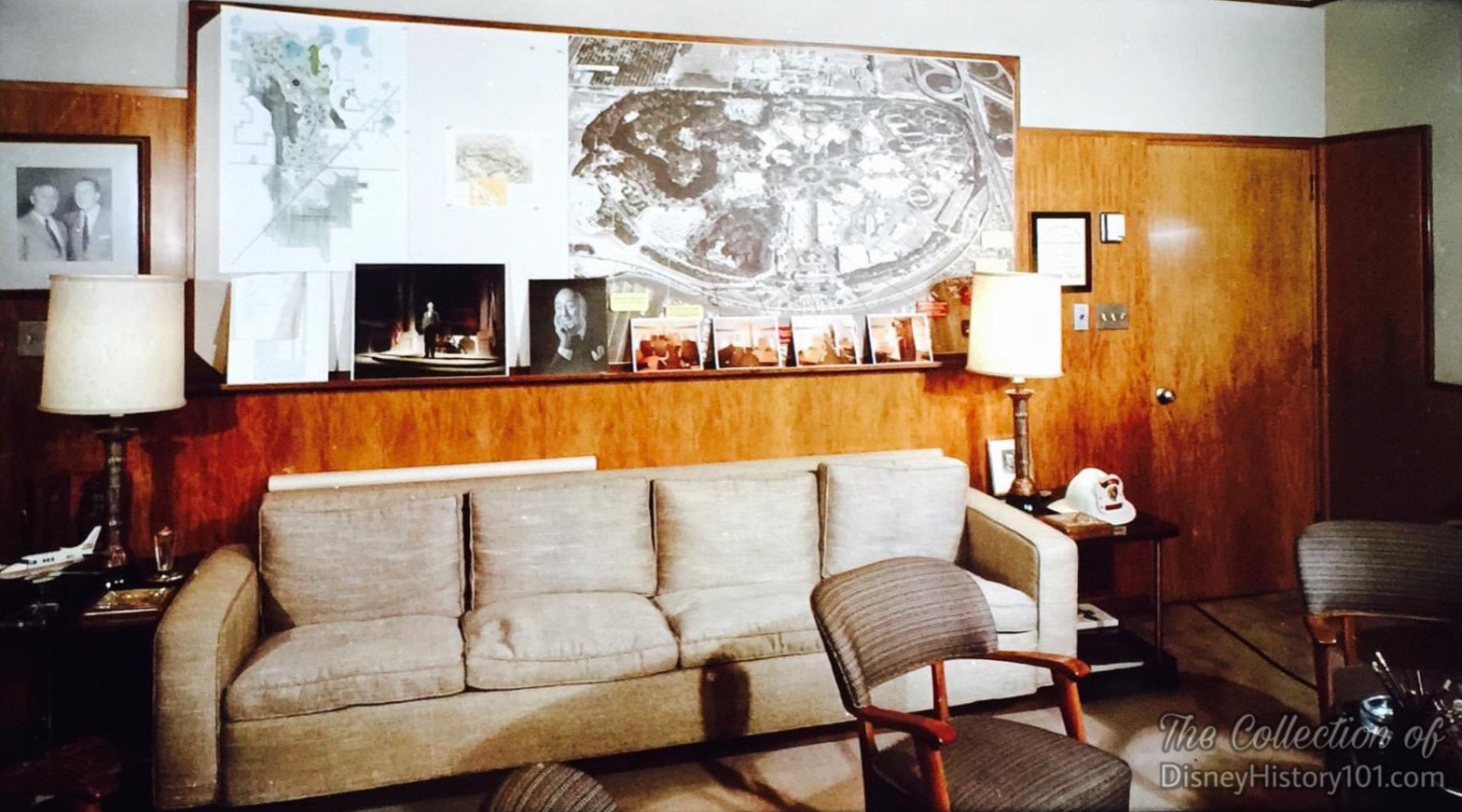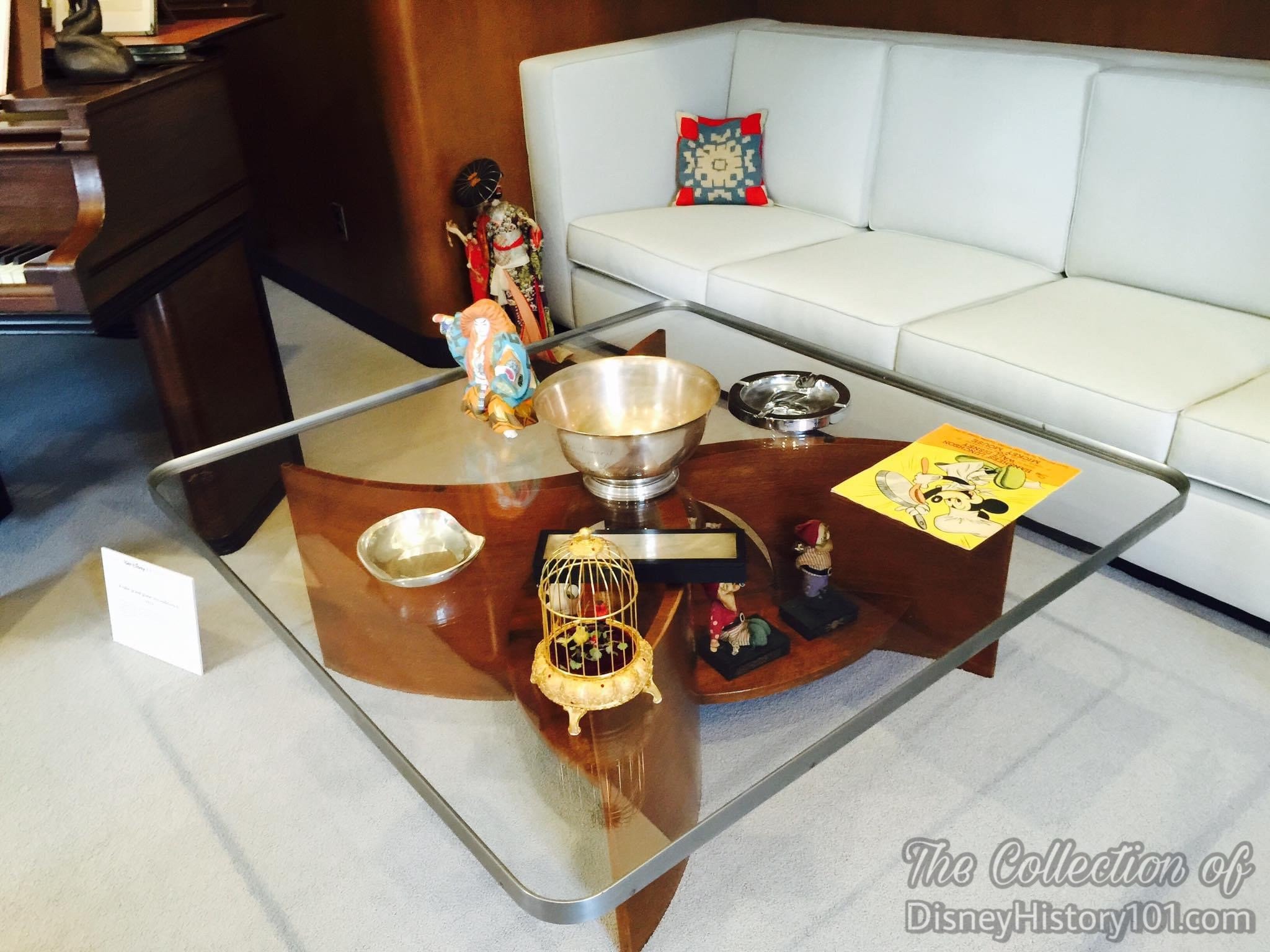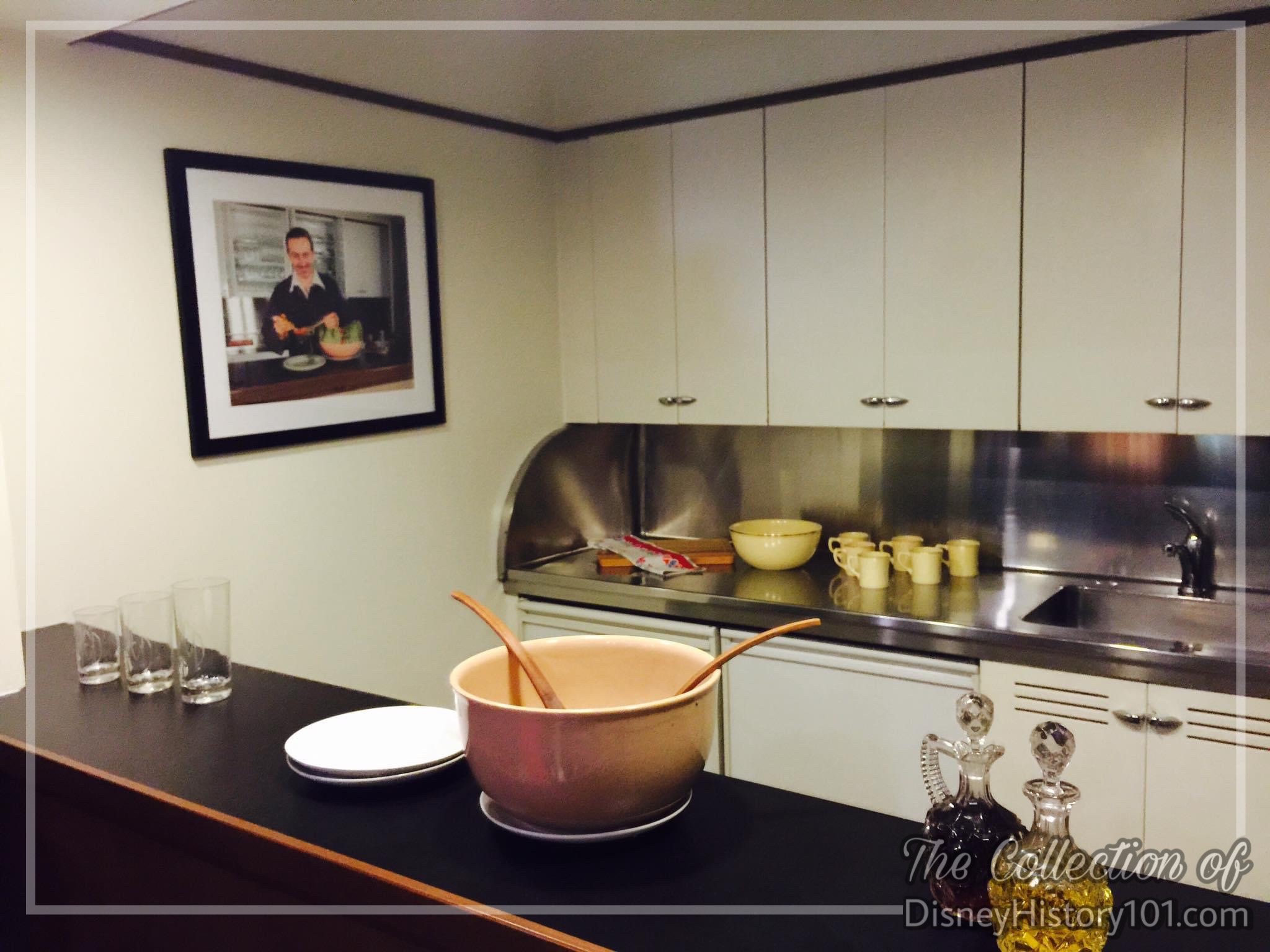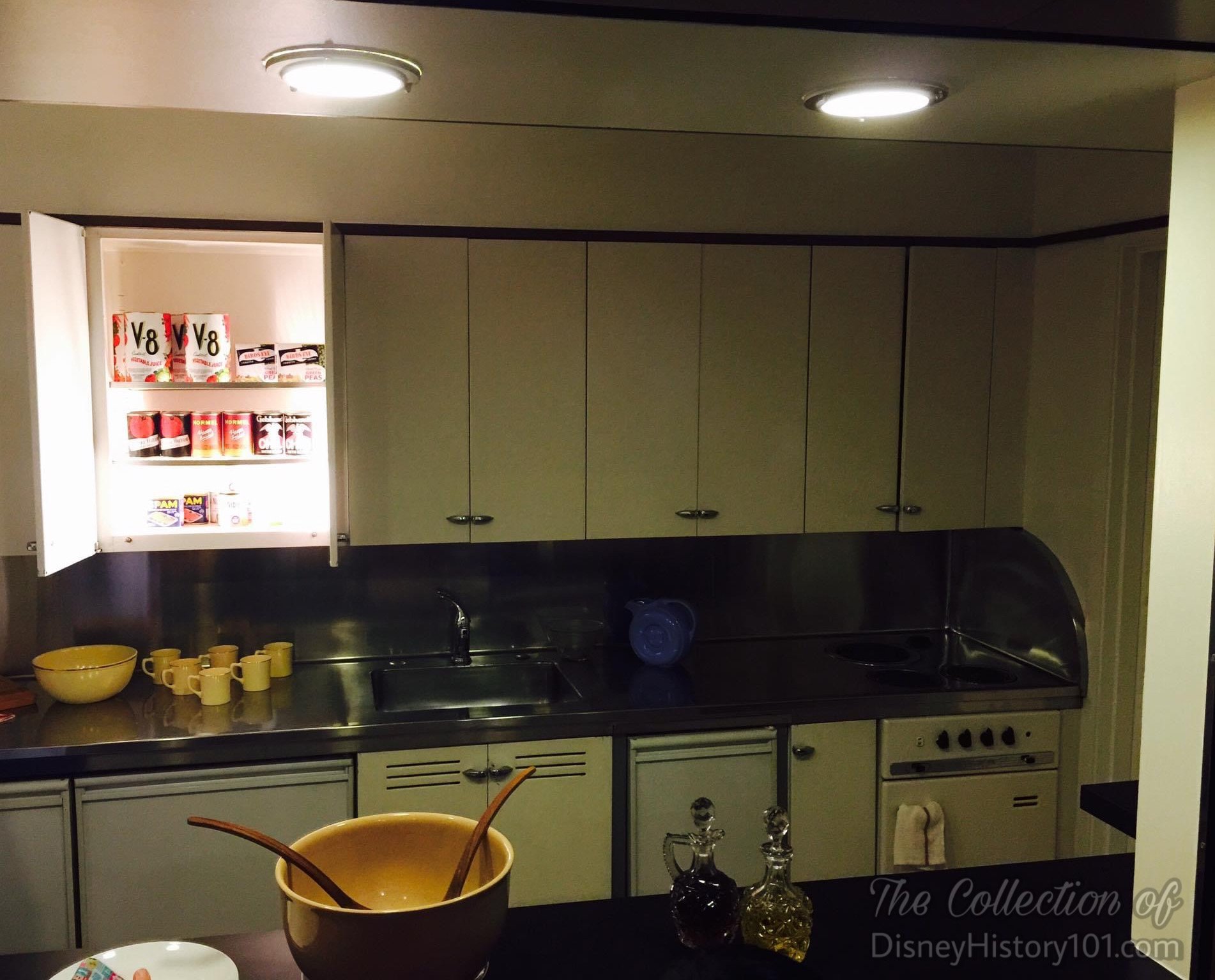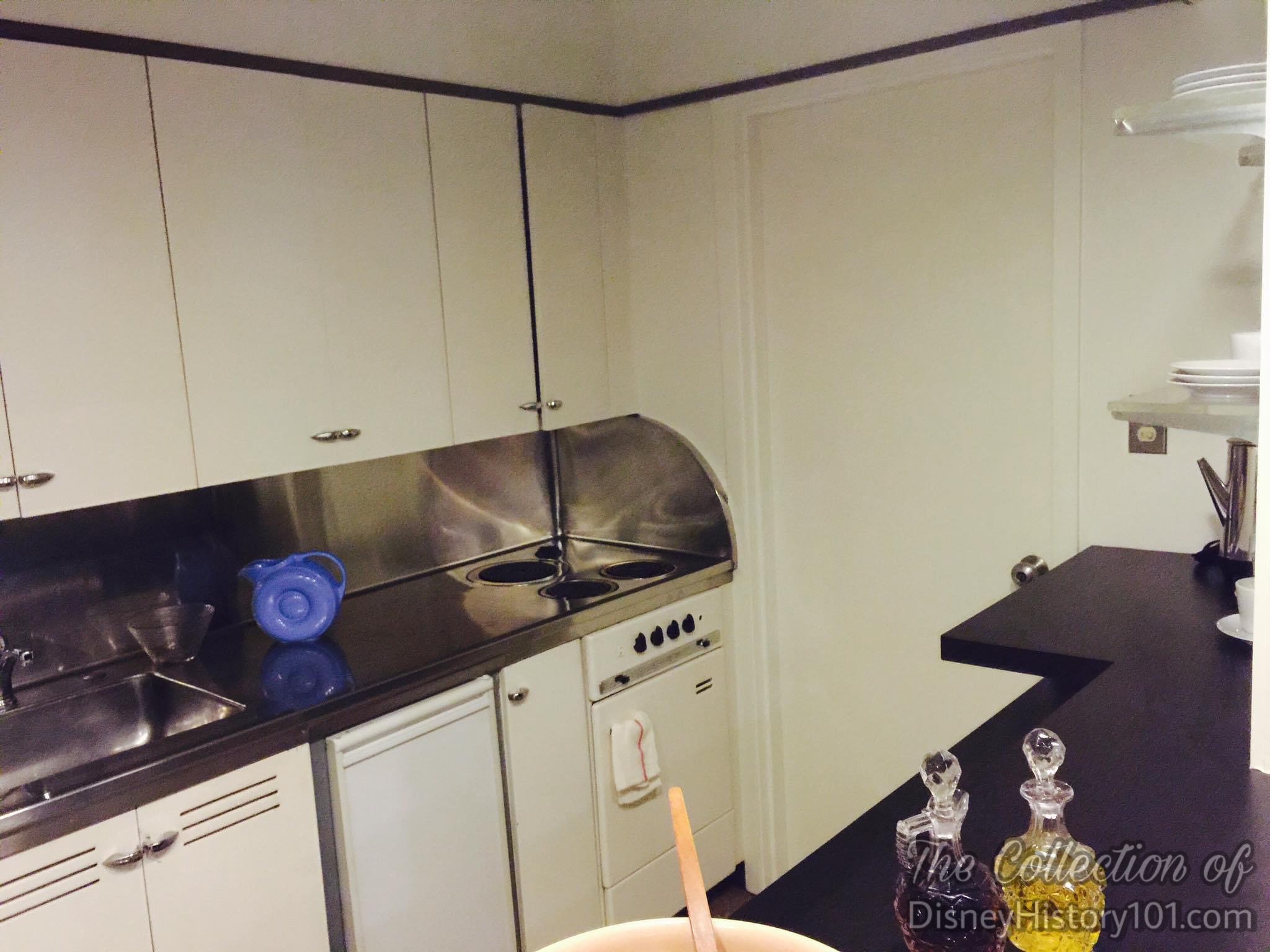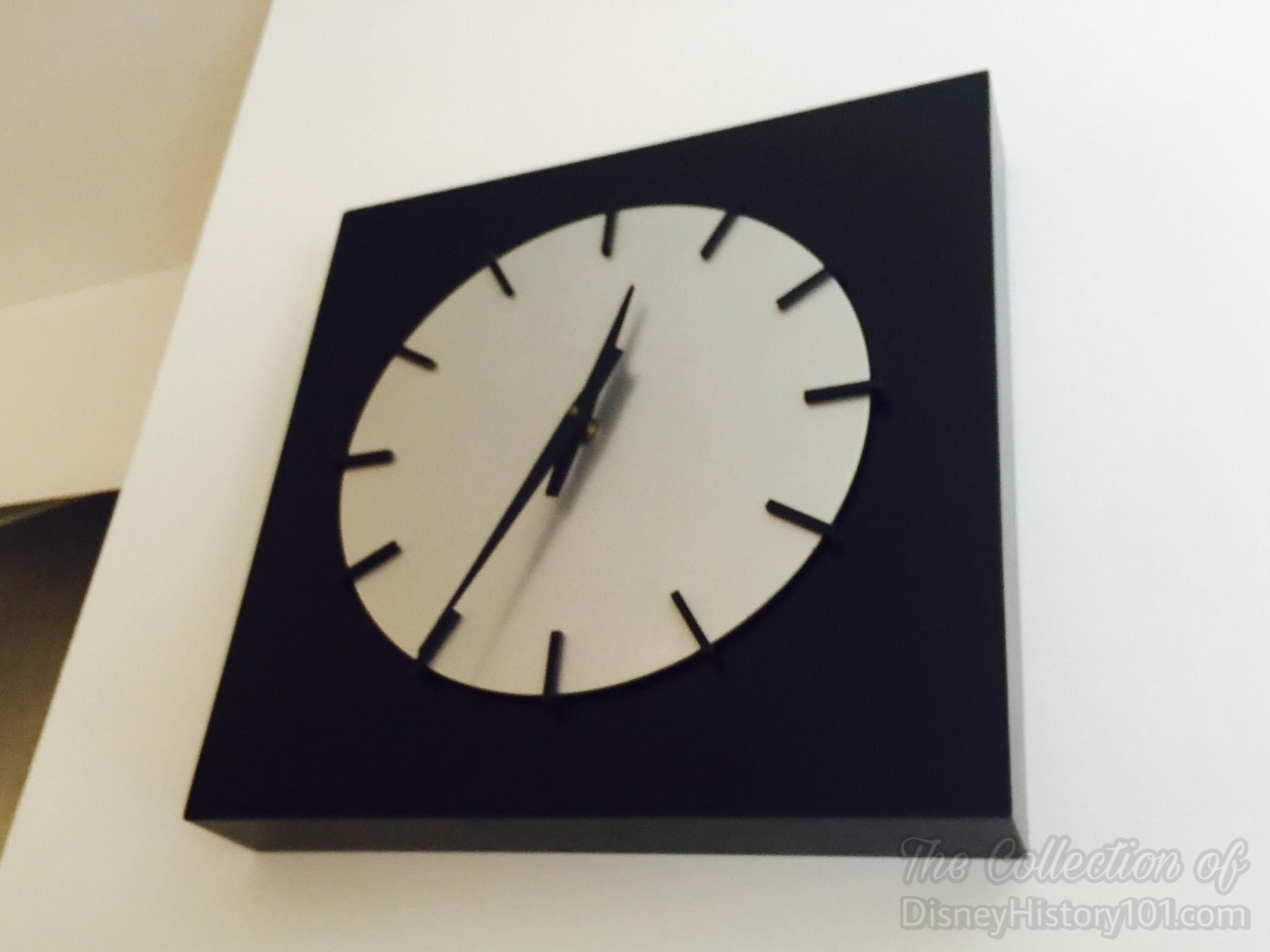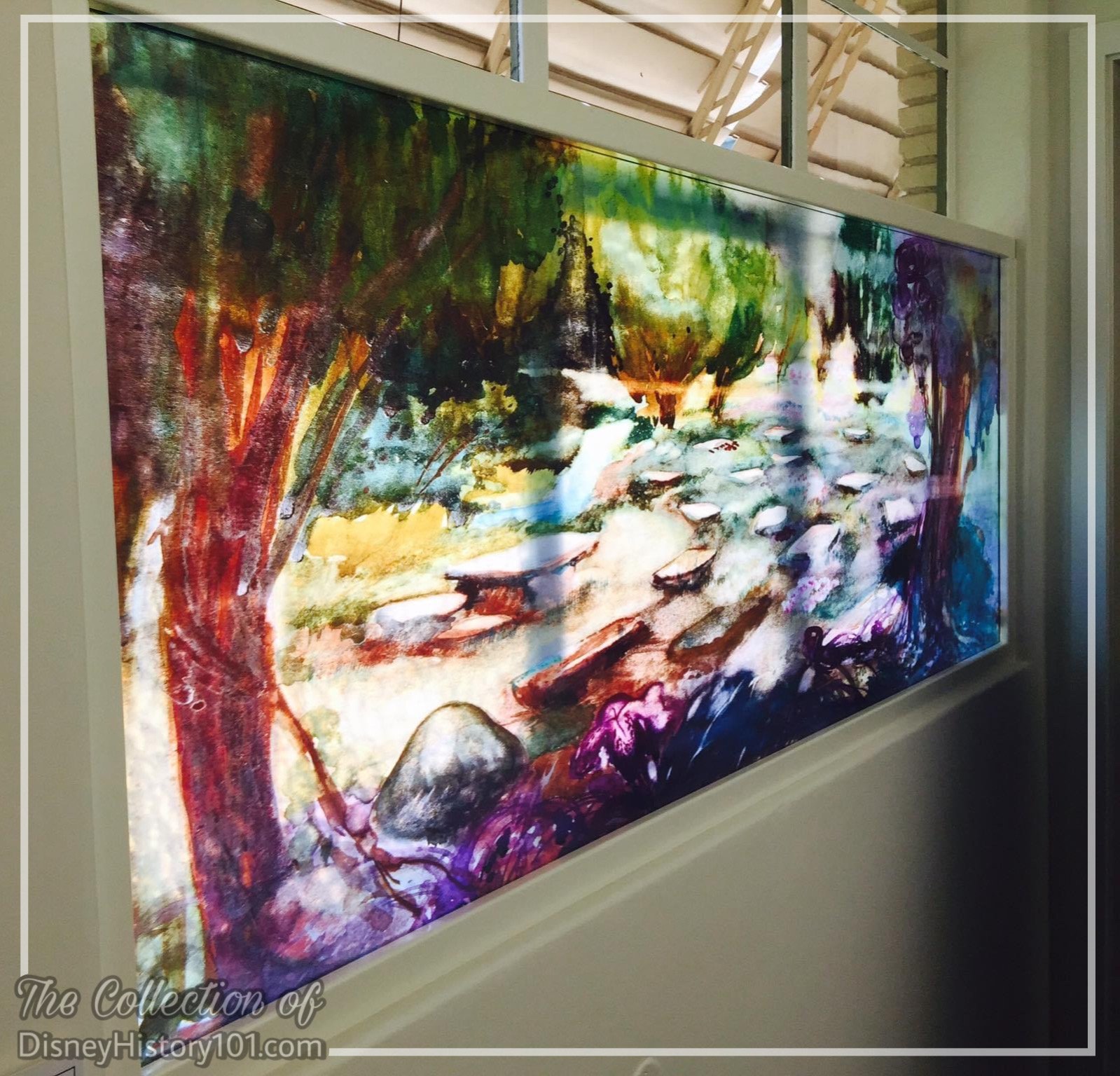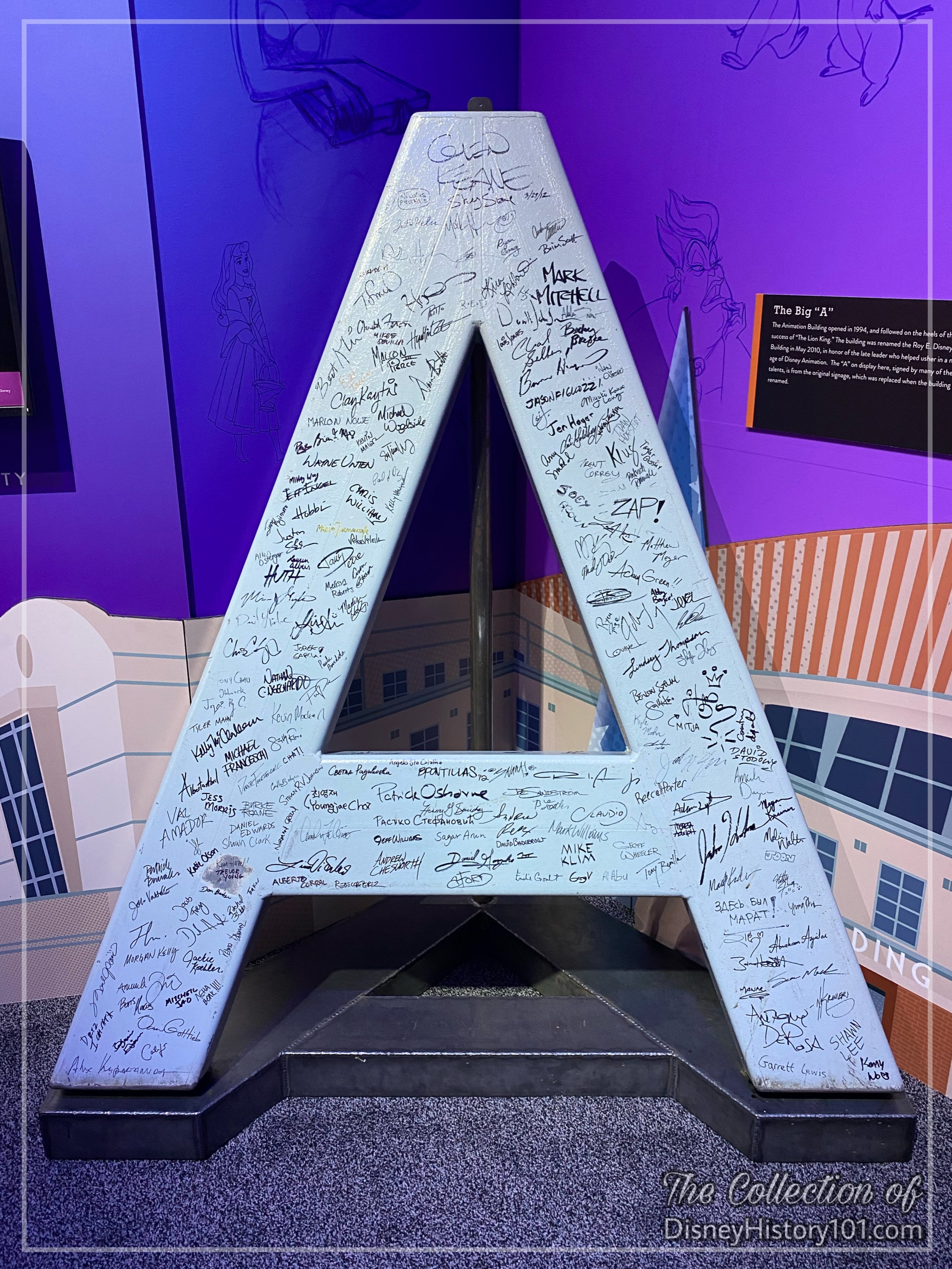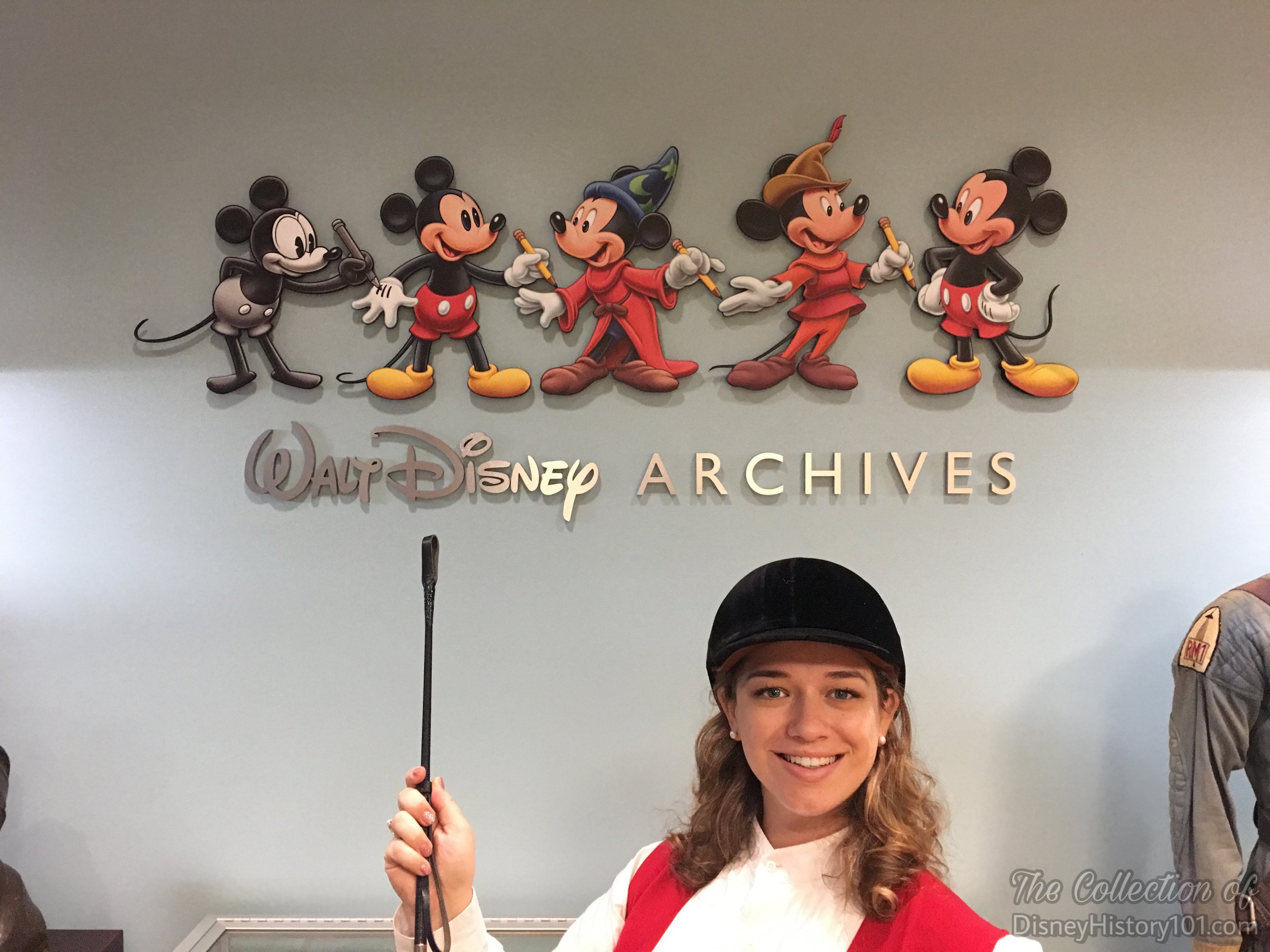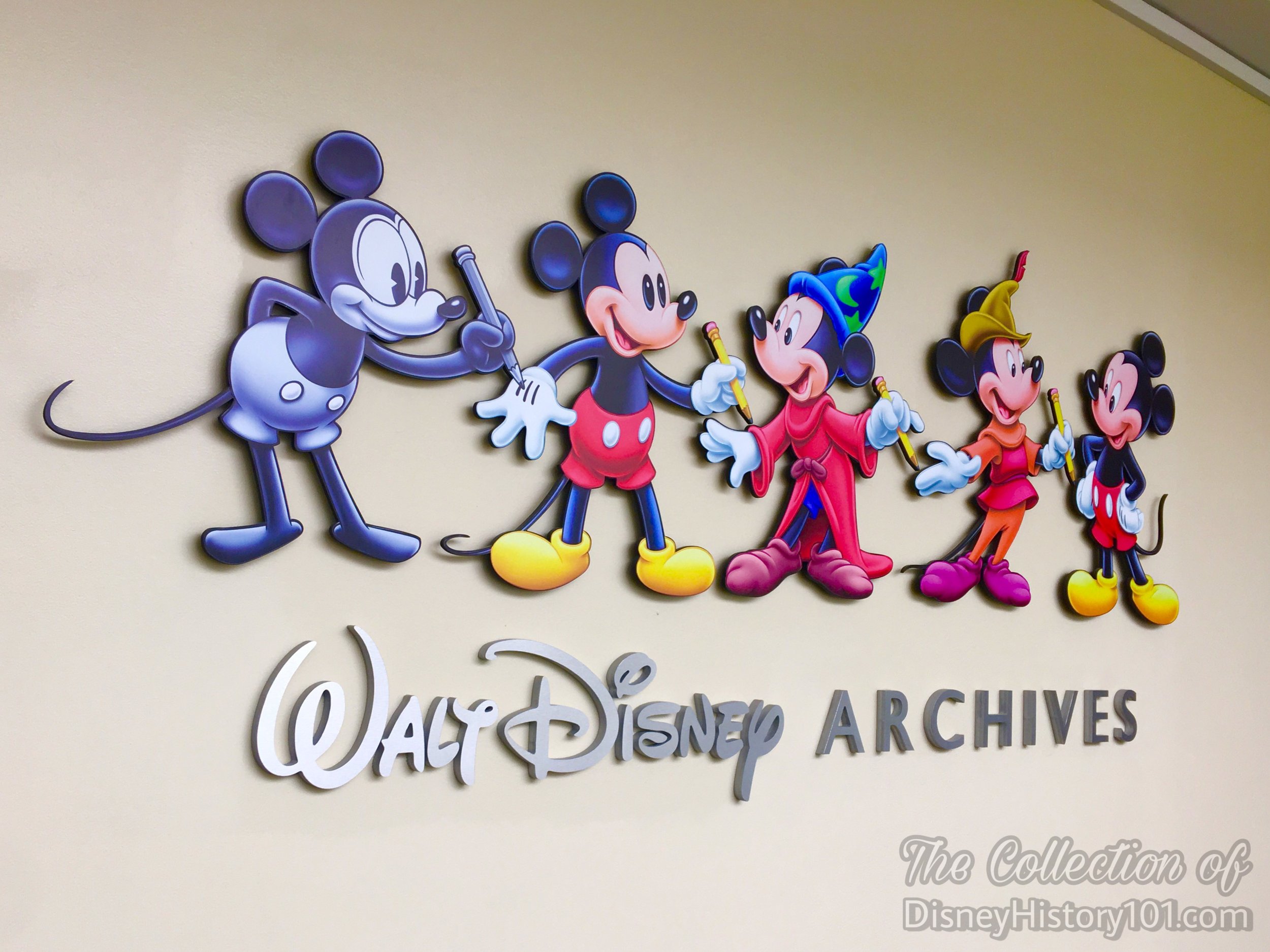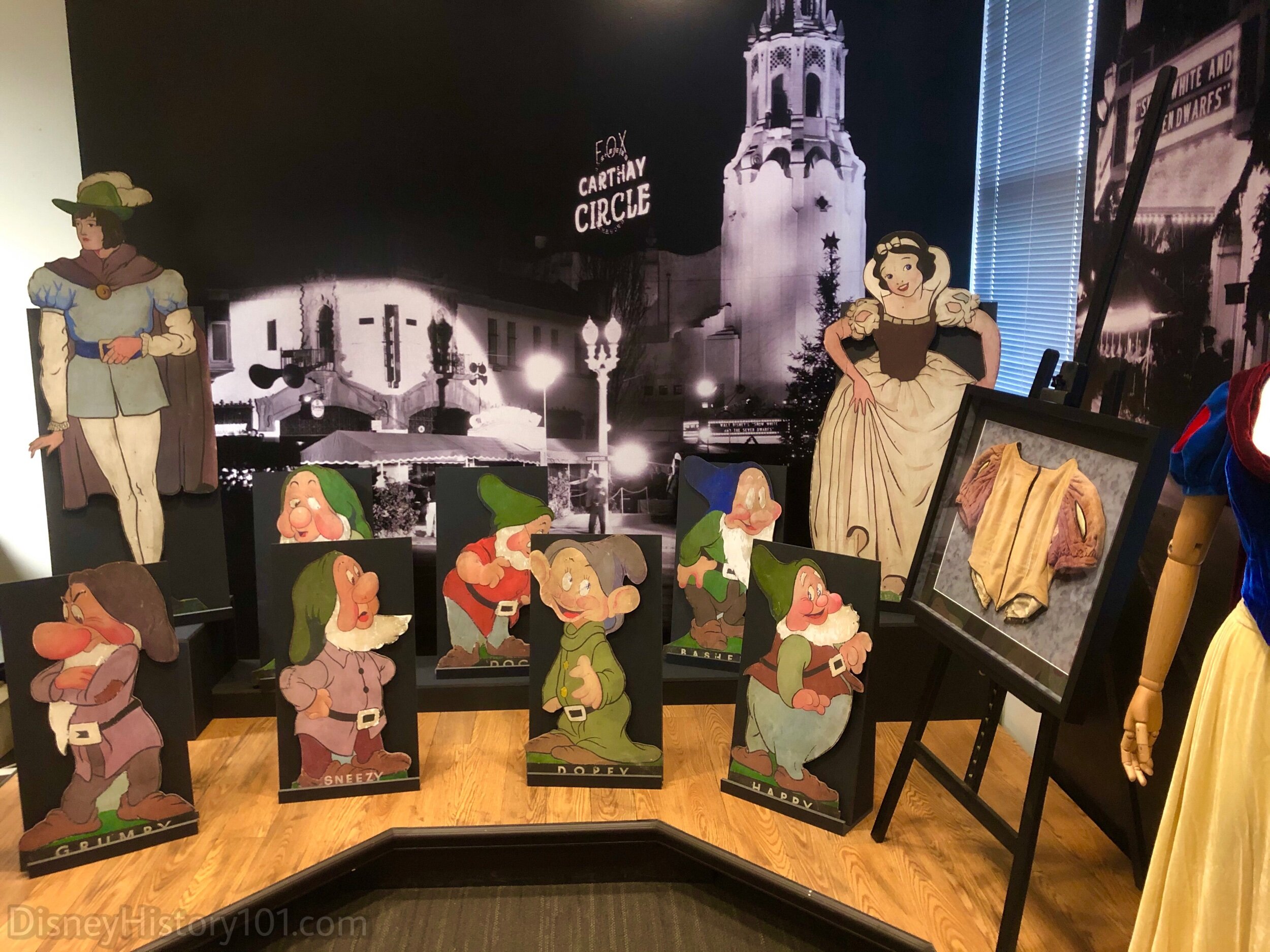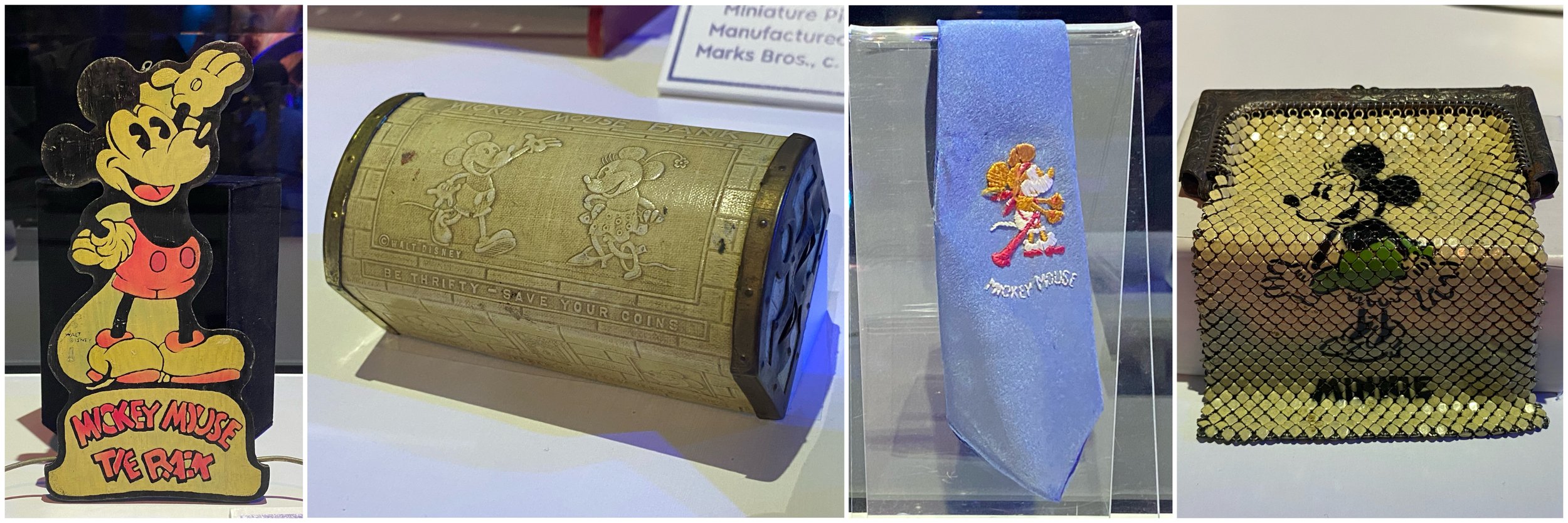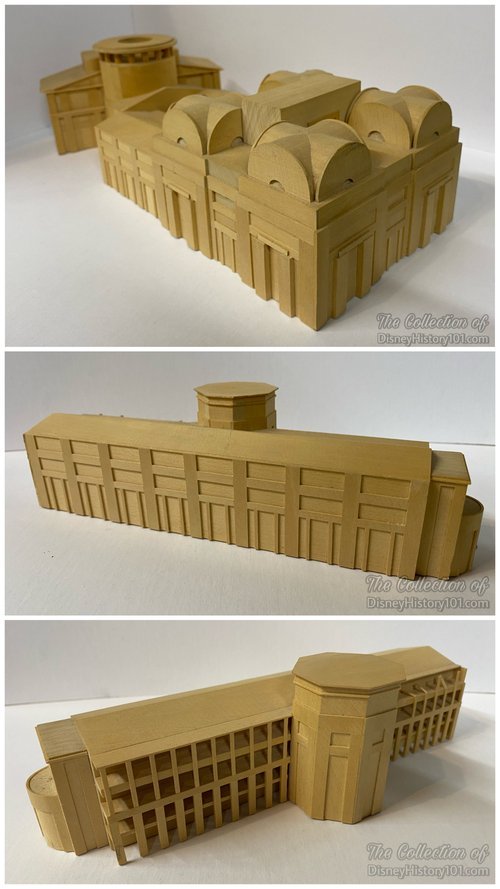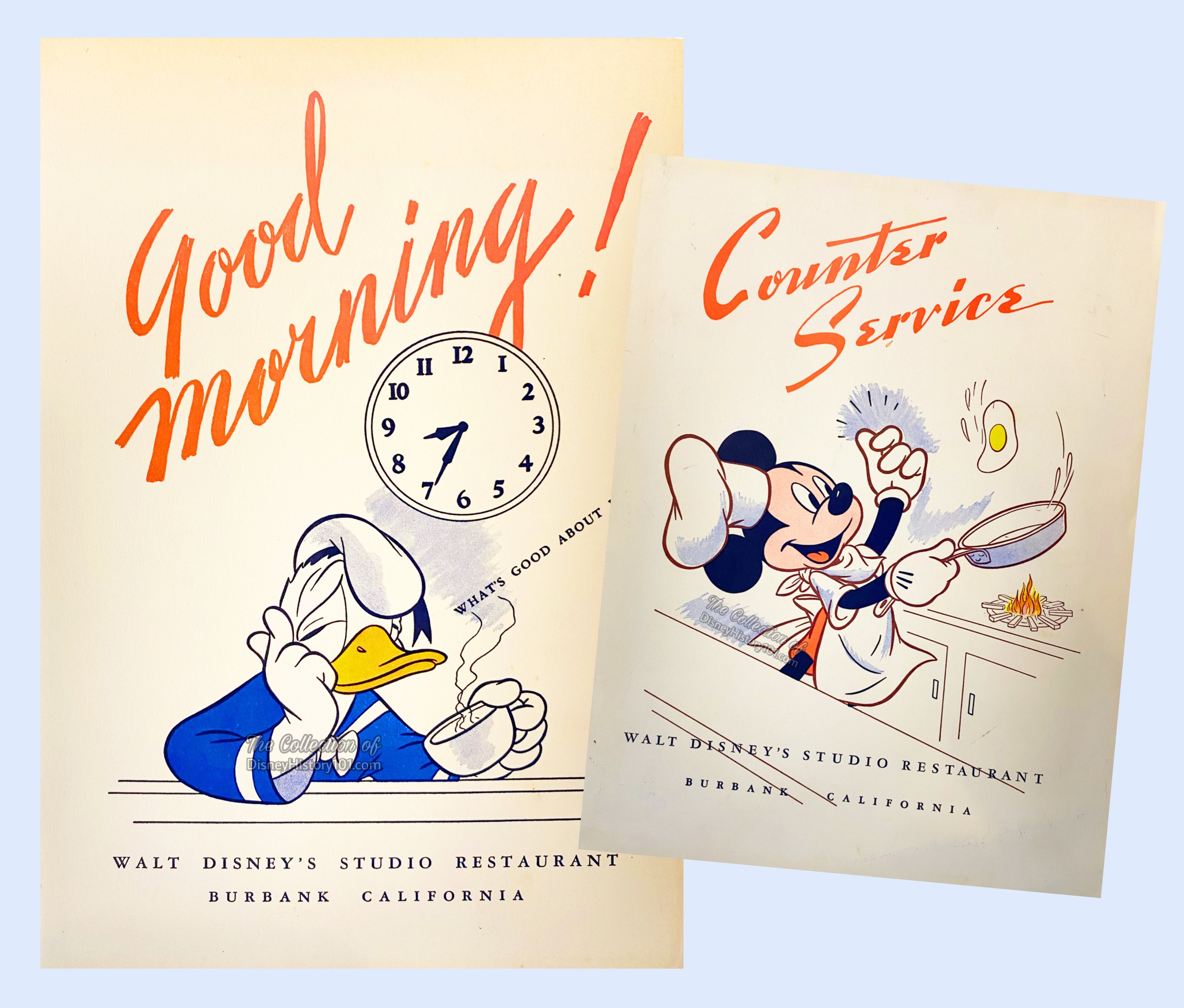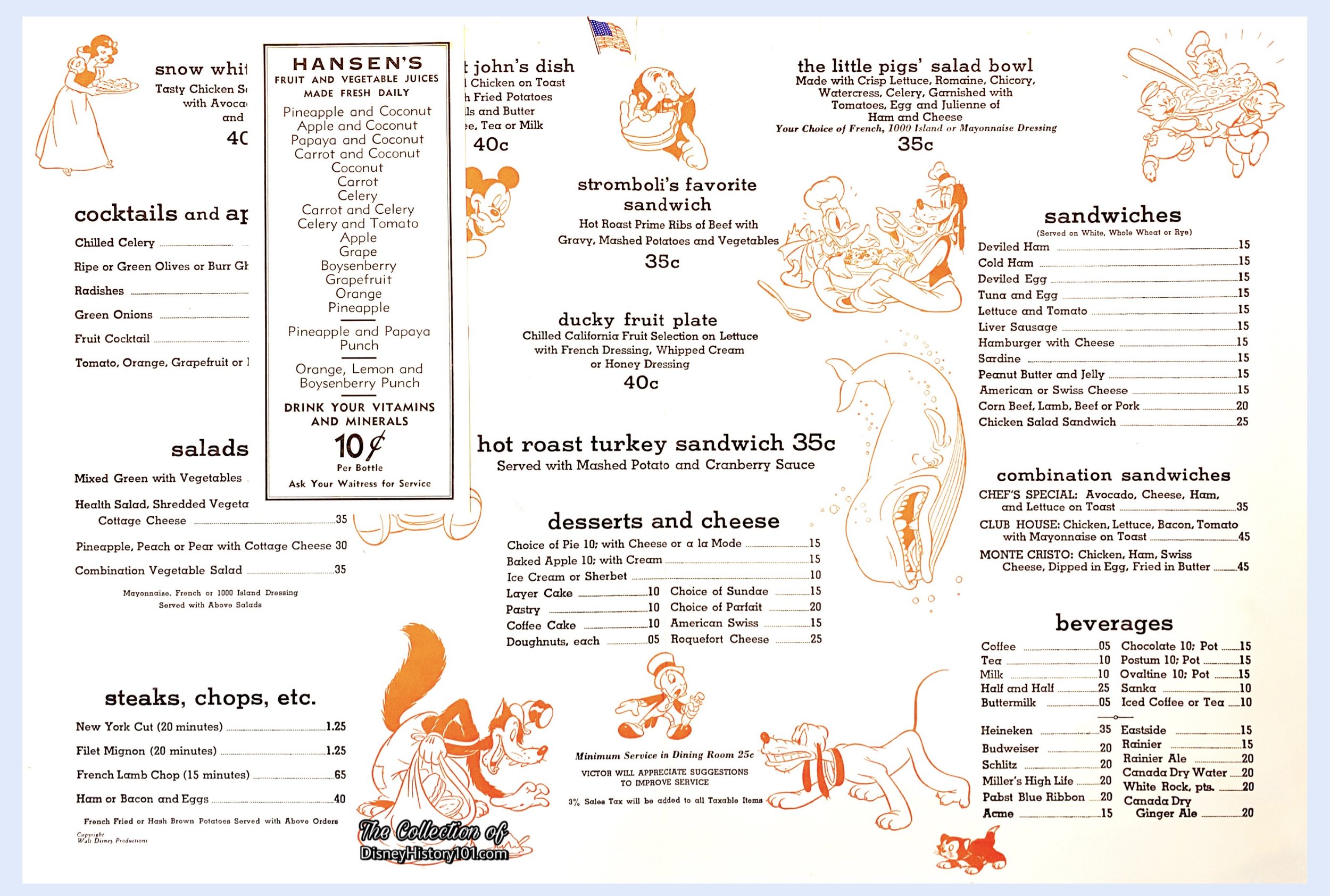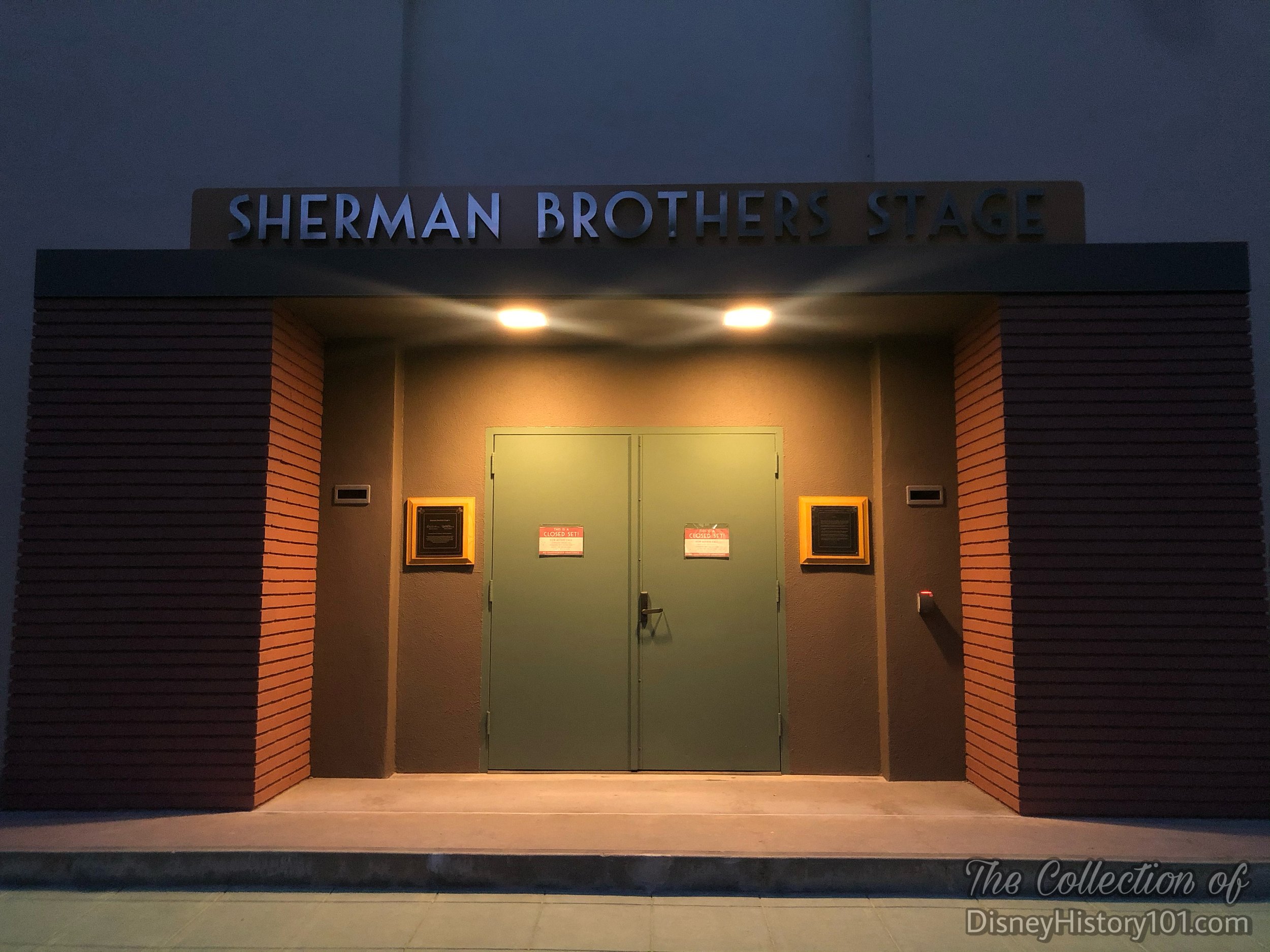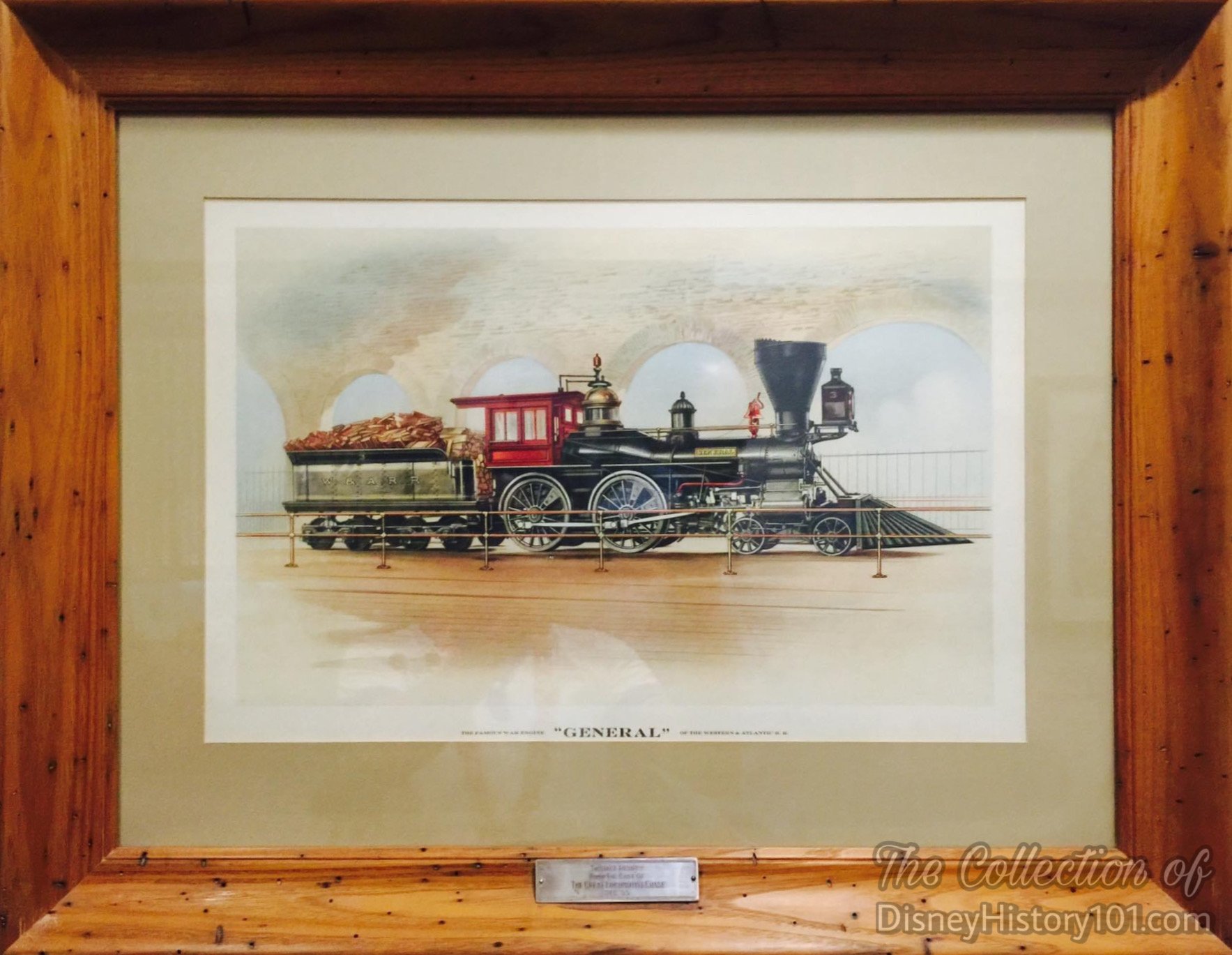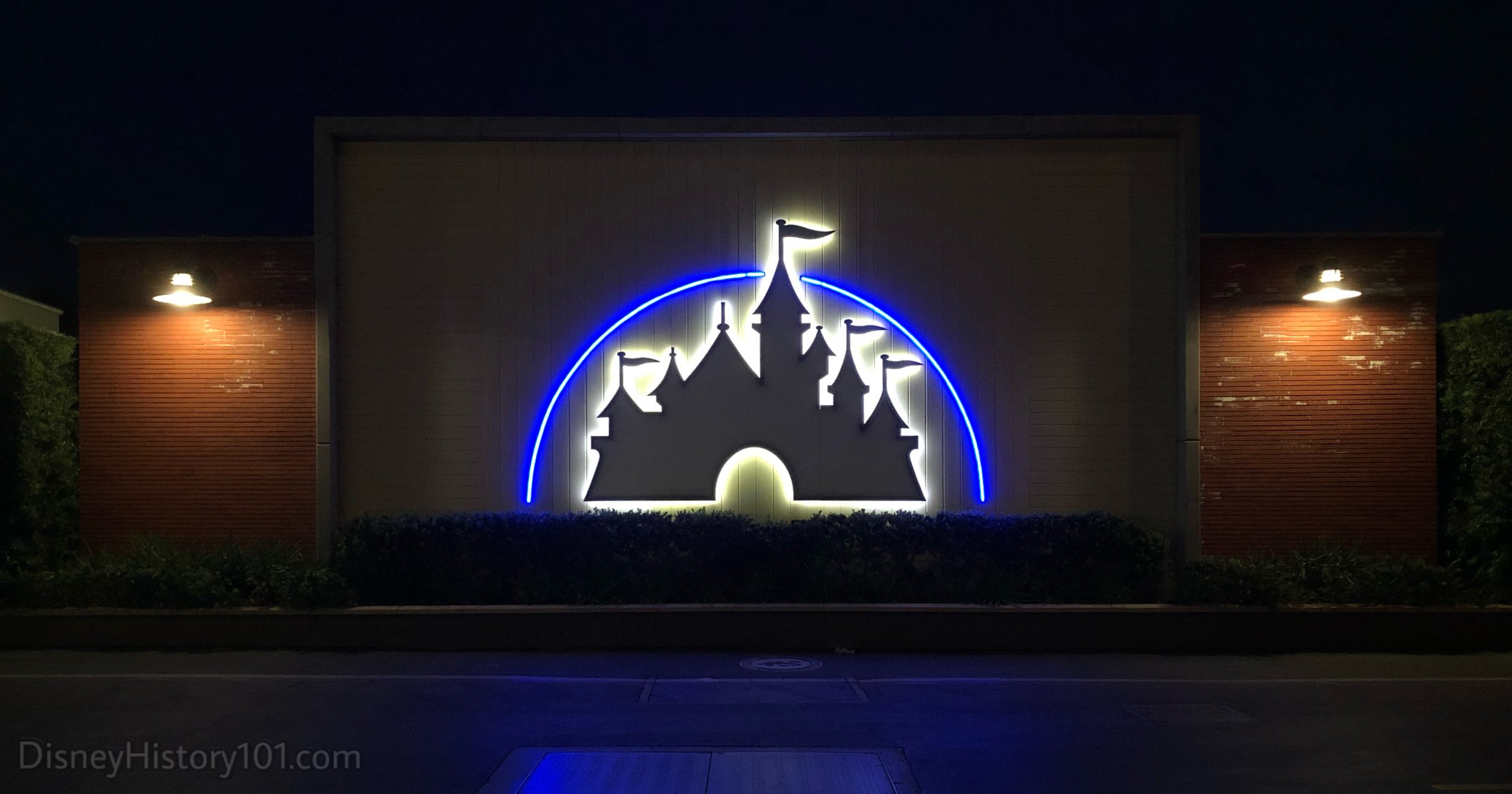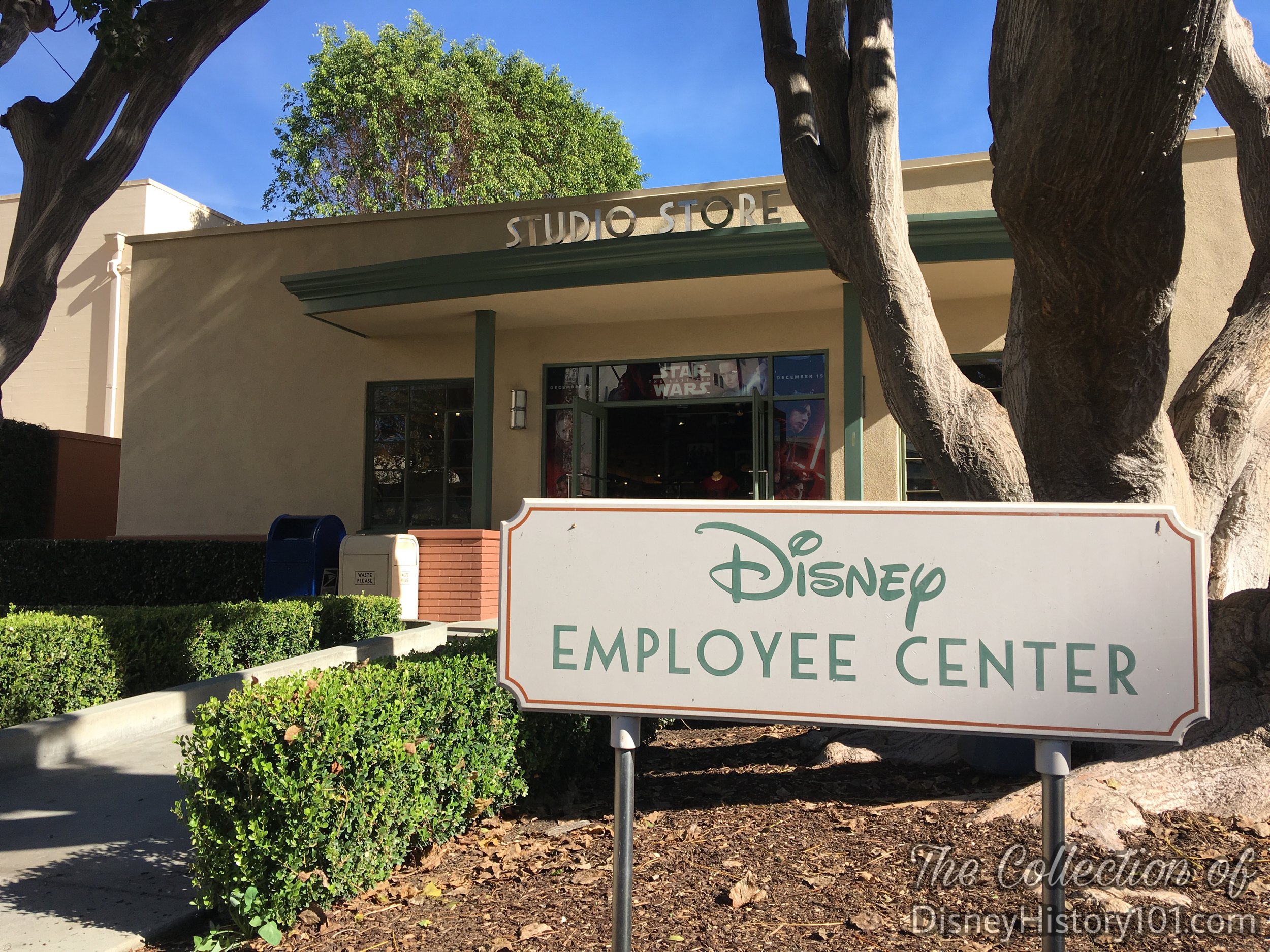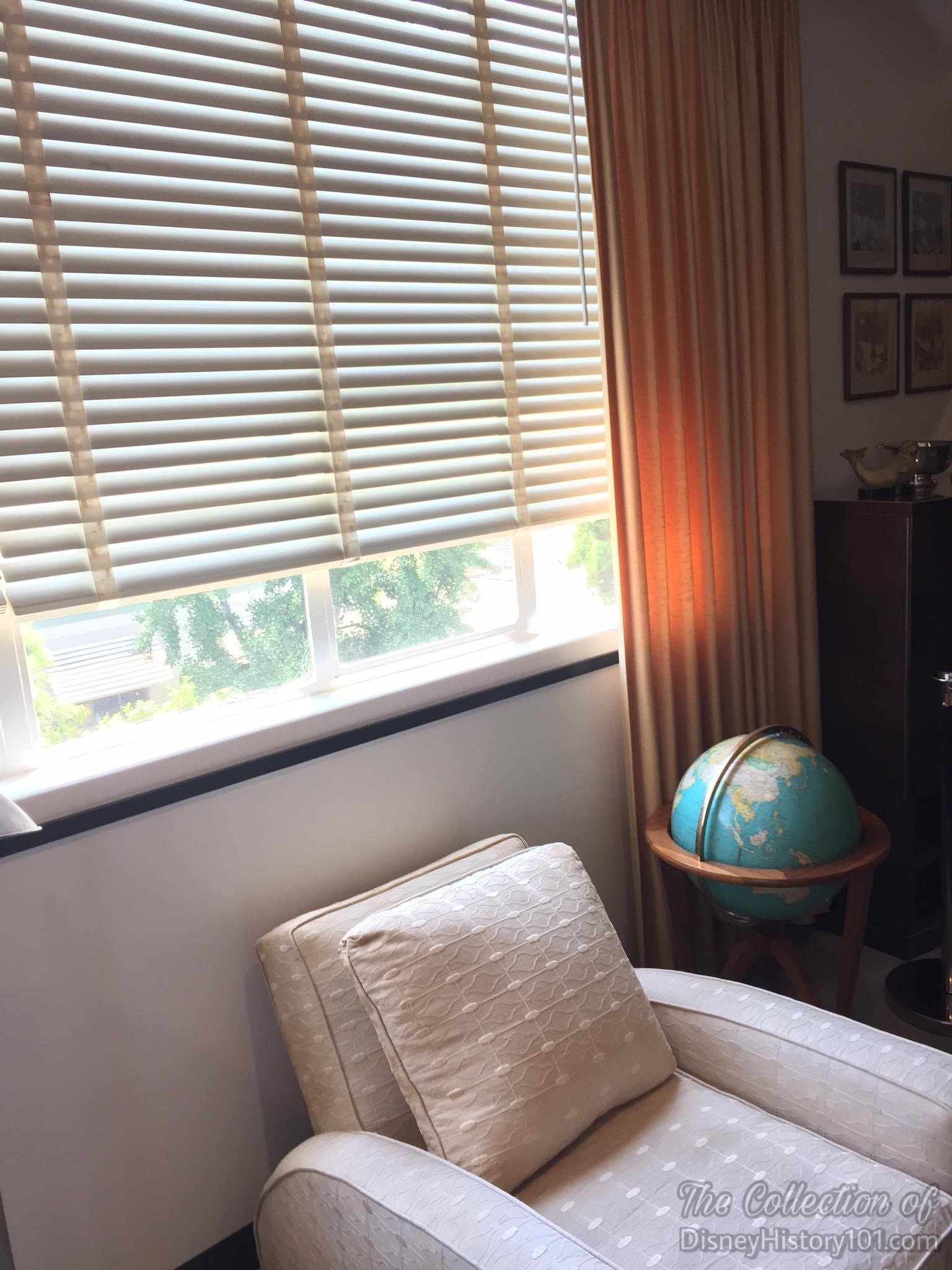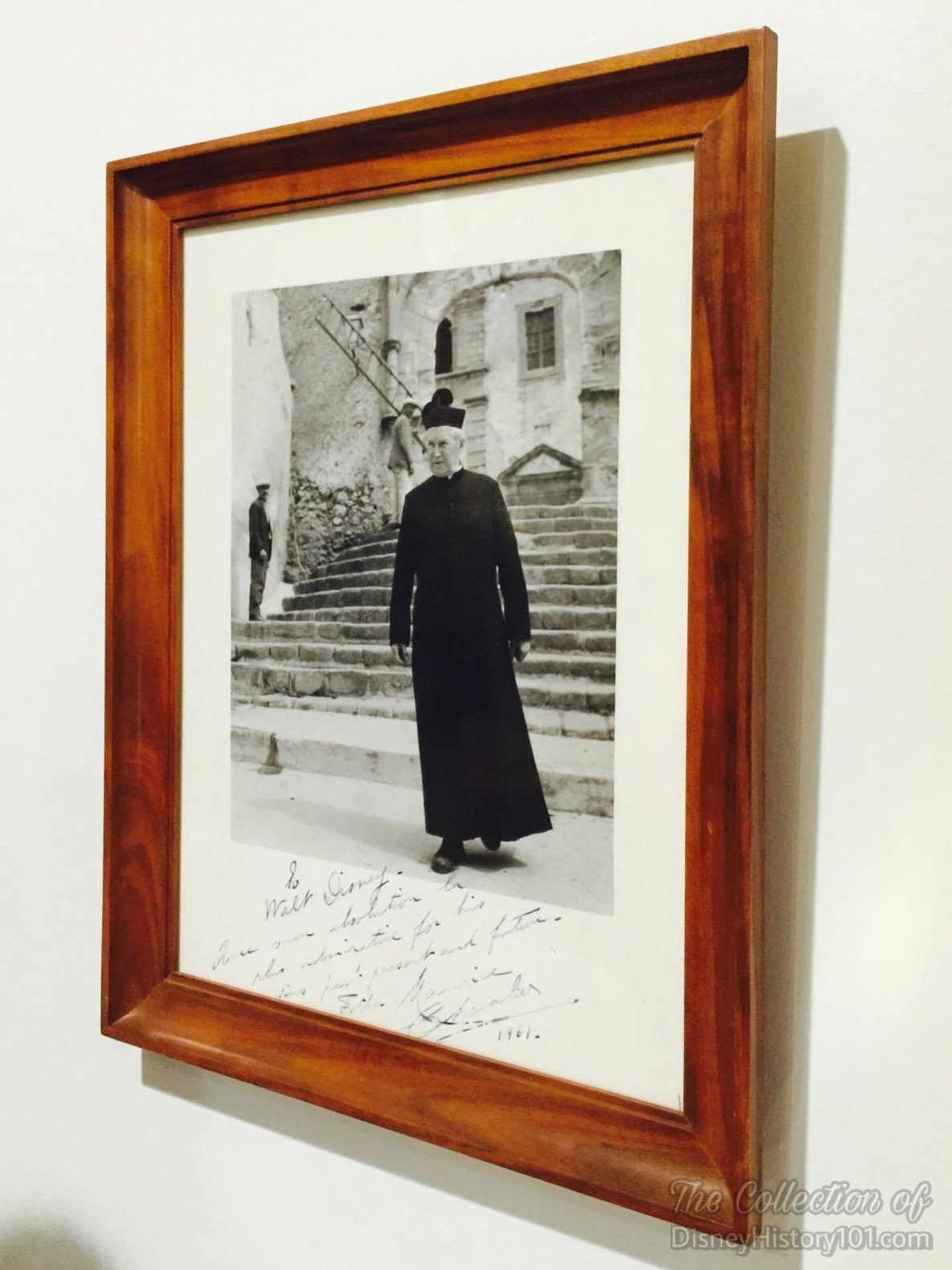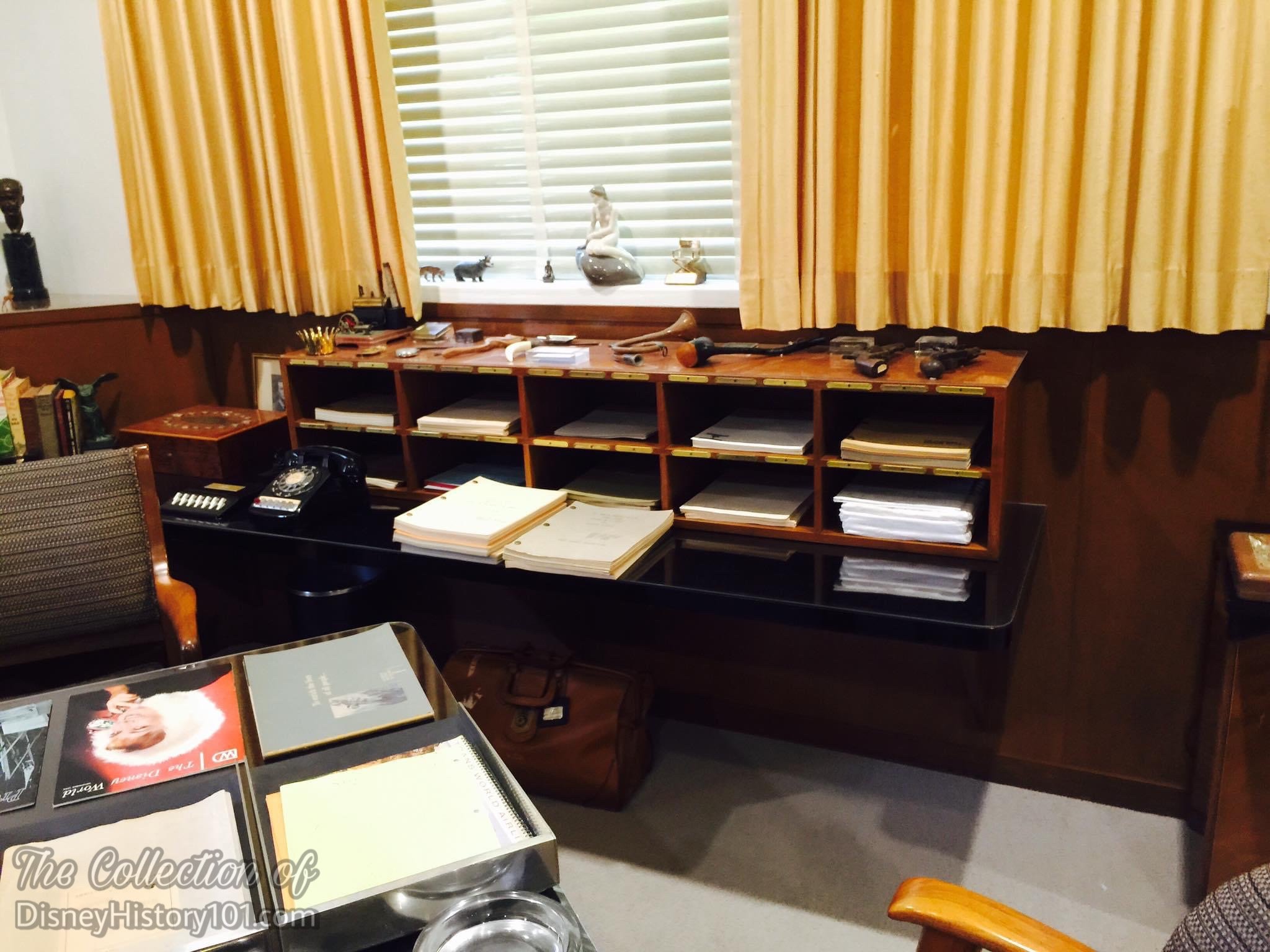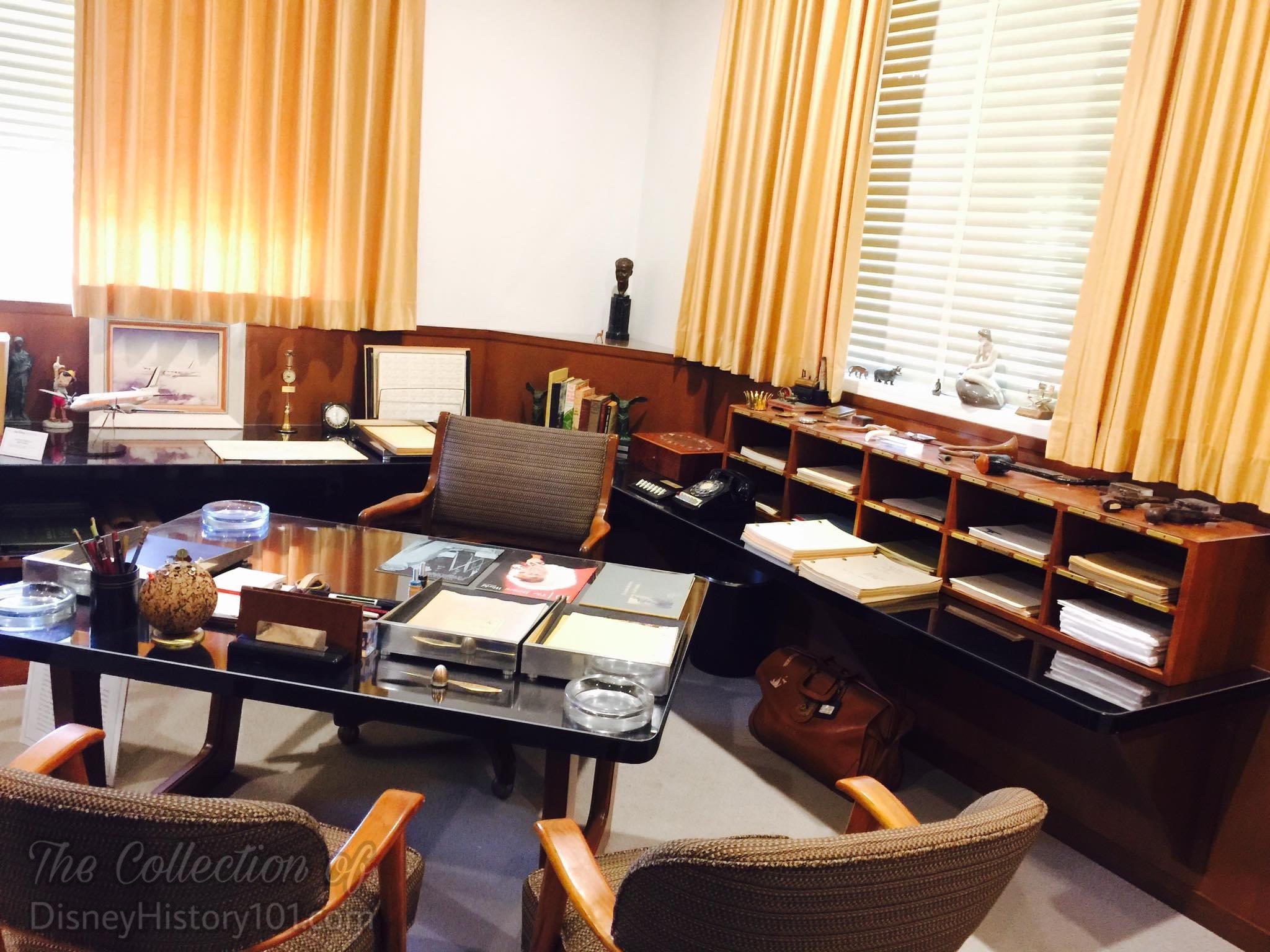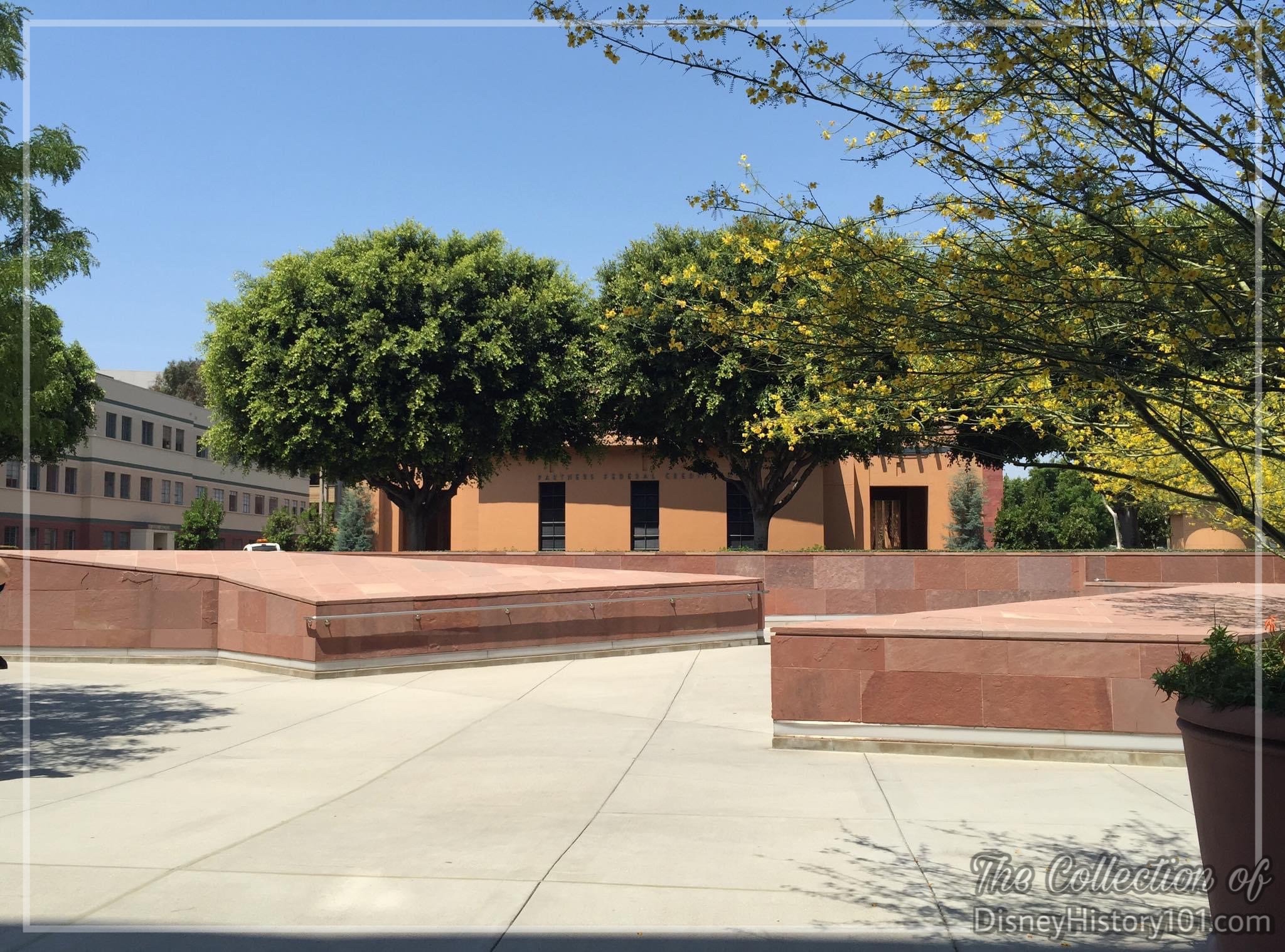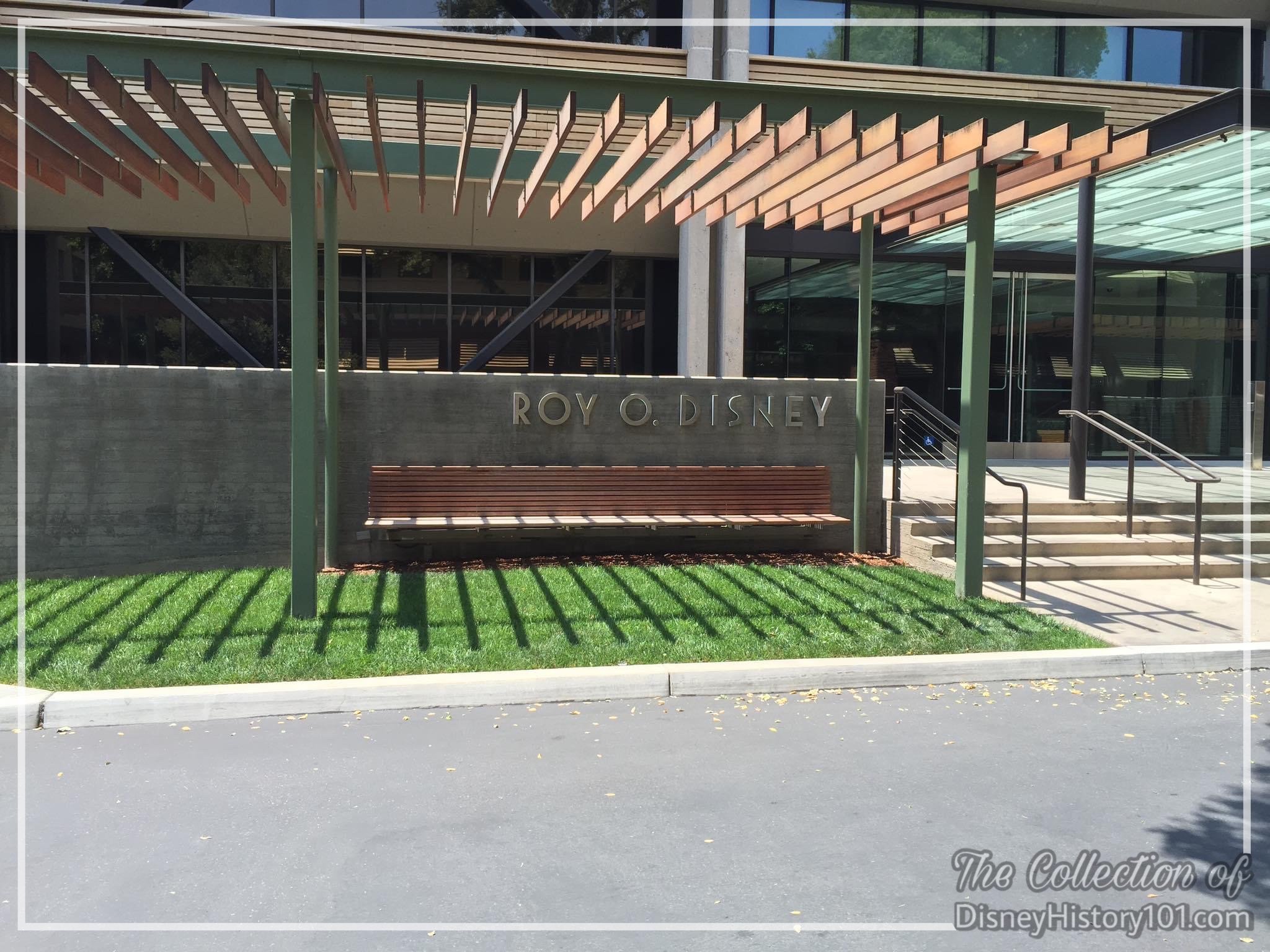“The Walt Disney Studios in Burbank”
“Prologue - Hyperion Studios”
Throughout the former years, the Disney Brothers had been renting an old studio on Hyperion Avenue in Hollywood. By 1929, Roy Disney had attained the financial stability to enlarge the studio, but this expansion was not fast enough for the ever-growing staff. A new studio was needed, a fact that was even joked about within the pages of “The Mousetrap” (an irreverent, unsanctioned journal created by uncredited Walt Disney Studios staff).
An excerpt of “Mousetrap”.
With the success of their first full-length cartoon feature, Snow White and the Seven Dwarfs the Walt Disney Studios was carried to the top of the animated production field and proved that there was a world market for Walt Disney's product. With the profits, Walt was able to meet the studio’s expansion needs and build a 3-million-dollar studio on a 51-acre parcel of land in Burbank, California!
In 1939, Architect Kem Weber designed the brand new Walt Disney Studios in Burbank, scheduled for completion by January of 1940. The new Streamline Moderne studio would be an increasing model of efficiency for film production and serve as the worldwide headquarters for the corporation. This was necessary considering the increasing staff (swelling to more than 1000 artists, animators, story men and technicians) spread across the diverse departments handling various processes involved in the production schedule of both short and feature-length films. (See Walt Disney Studios Operations Chart and Cartoon Continuity Through the Studio Chart below.)
A Walt Disney Studios Operations Chart; 1940s.
Cartoon Continuity Through the Studio Chart; approved May 3, 1946. This new, simplified chart shows the progress of cartoon production through the studio. This helpful, interesting and easily understood picture would help those in the organization grasp how a cartoon idea develops into the finished product.
Walt once shared: “Whatever we accomplish is due to the combined effort. The organization must be with you or you don't get it done.” Originally the Walt Disney Studios would hold a Machine Shop, Processing Lab, areas to accommodate Ink & Paint, Reception, the Cutting Room, Cameras, a Print Shop, a Library, and a brand-new three-floor, eight-wing Animation Building. These were ergonomically placed around the property to create an efficient and comfortable working environment. (See Walt Disney Productions Directions Maps below.)
Walt Disney Productions Direction Maps were featured on the reverse of these circa 1950s Studio Guest Pass media. Many main streets of the Walt Disney Studios (like Minnie Avenue and the well-travelled Donald Avenue) were named after Disney Standard Characters.
Notwithstanding production of Walt Disney’s Academy Award-winning Pinocchio (due to be released February 7, 1940) and the Academy Award-winning Fantasia (which was to be released November 13, 1940), construction of the new studio was completed by January of 1940. By May 6, 1940, the move from Hyperion to Burbank was complete. This move included the employees, equipment, and even structures from the old studio location.
“Mickey Avenue & Dopey Drive - The Crossroads of the World”
Soon after the move was complete, The Reluctant Dragon (the first live action filmed at the studio; released June 20, 1941) offered audiences the opportunity to see what a working animation studio looked like. A special directional sign prop was constructed for a scene of the film featuring actor Robert Benchley. Today, a sign reading “Mickey Avenue” and “Dopey Drive” stands at the famous intersection.
We’re at the veritable “crossroads” of Walt Disney Studios! Since June of 1941, Mickey Avenue and Dopey Drive at Walt Disney Studios (Burbank, California), has become known for this film prop! This is thanks to its appearance in the Walt Disney Production The Reluctant Dragon, and a certain photo featuring women of animation Eva Sinclair & Jackie Walker!
The corner of Mickey Avenue and Dopey Drive.
“The California Bungalow”
One of the oldest structures on the lot is the California Bungalow. According to the Walt Disney Archives: The Bungalow “was built in 1935 as the original home of the Disney Publicity and Comic Strip Departments. It was constructed at the Disney Studios on Hyperion Avenue in Hollywood and moved to the Burbank location as part of the construction in 1939-1940.”
“At the Disney Burbank lot, the building housed many of the support services. Payroll, Publicity, Support, Traffic and finally the Post Office were located in this building.”
The entrance to the Hyperion Room of the California Bungalow.
Today, “The structure is the last remaining example of the ‘California Bungalow’ type architecture that remains from the old Hyperion studio facility. Its attractive style and utility, starting in the early years of the company, give it a special place in the history of the Disney Lot.”
The entrance to the Silverlake Room of the California Bungalow.
It appropriately houses two meeting rooms named the Hyperion Room and the Silverlake Room.
A sign advertises the grand opening of the Walt Disney Studios Main Theater on Wednesday, April 10, 1940.
“The Main Theater”
The new studio would enable Walt to produce two features at the same time (Pinocchio and Fantasia were both on the production slate at the time). In the photo (pictured above), three Walt Disney Studio employees look on, in anticipation of the Grand Opening and screening of the recently released Walt Disney’s Pinocchio. The Main Theater was streamlined with the geometry of Art Deco. It opened on the Walt Disney Studio Lot ahead of Pinocchio’s February release. The Main Theater opened on Wednesday, April 10th, 1940, premiering the new completed film for the staff.
Eventually, the Walt Disney Studio came under the parent Company of Walt Disney Productions (formed by Walt and Roy Disney in 1923). Walt Disney Productions would produce motion pictures for theatrical and television distribution and occasionally these would be screened at the Main Theater.
The Walt Disney Studios Main Theater.
The delicate dandelions of the floral ballet from the “Nutcarcaker Suite” segment of Fantasia are memorialized in glass within the Walt Disney Studios Main Theater Lobby.
The Walt Disney Studios Main Theater.
“Clubs & Activities”
In the early days after the move, Walt arranged for the women Ink and Paint Department employees to enjoy daily Tea Time in one of the quiet corridors of the Walt Disney Studios.
By the time he was hired during the summer of 1954, Van Arsdale France mentioned how the Studio “was much more like a good-sized university.” He recalled that by the time the Studio was referred to as “the Campus.” He went on to describe aspects that he called “unbelievable” - “People playing ping pong, volleyball, basketball, softball, or just lying around the grass.” There was a gym for male employees and there were clubs formed.
Dispatch at Disney’s, 1943.
The Walt Disney Productions “Huey” DC Generator.
However by 1972, the Walt Disney Studio was 1 of 24 companies operating under the parent company of Walt Disney Productions and its 1,500 employees were just involved basically in producing motion pictures and television entertainment.
You may have visited Walt Disney Studios, and noticed this gigantic DC “Huey” Portable Generator hanging out near the parking garage! This early form of a direct current generator would provide much needed power to studio equipment (like lighting, cameras, and tools) during the 1950s. It may surprise you to know that this “larger than life” generator derives its nickname “Huey” (not from Donald Duck’s Walt Disney Productions co-star nephew, but) from the Paramount Pictures’ popular animated star - “Baby Huey”!
“Walt Disney’s Working & Formal Offices - 3H”
Walt had two offices on the Walt Disney Studio backlot. Walt Disney’s Working Office was used for conferences with directors, writers, artists, and almost anyone involved in creating Walt Disney Productions. Walt used his “Formal Office” for appointments with special guests visiting the Disney Studio.
According to National Geographic (published August, 1963), “Walt’s office has become so crowded [with awards] that recently four cabinets of awards were placed in the Studio Commissary. Some of the employees promptly nicknamed the commissary the ‘Awards Room,’” adding that “He is proudest, perhaps, of the Audubon Society Medal awarded in 1955.”
The two offices (filled with their authentic contents) were used by Walt for nearly 26 years. The offices appear today as they were found in 1970 by Dave Smith, our Walt Disney Company Archivist.
If you were a Disneyland Cast Member during the early 1980s, you may have seen glimpses of Walt Disney’s Working Office inside the pages of the “Welcome to Disneyland” Orientation book. If you visited Disneyland during the mid-1970s, you may recall seeing a recreation of Walt Disney’s Working Office. Some of you may have fond memories of the rarest privilege of all - to have been invited to the third floor (on the corner) and into Walt’s Working Office for a meeting. After Walt’s passing in 1966, the office was shut (allowing the immediate family member’s entrance to procure select mementos).
Now after some time, the Walt Disney Studios was approached with a proposal by Dave Smith, to thoroughly archive the contents of the Offices of Walt Disney, and the “Chief Archivist Emeritus” would become the first person to enter, preserving and taking inventory of every item in the office, right down to the number of pencils on Walt’s desk.
Did you know that a copy of a script for Steamboat Willie was found in his office desk, in Walt's possession for nearly 35 years?
Walt’s Working Office Desk.
Behind the desk of Walt’s Formal Office, you’ll notice many figures and miniatures which were either purchased during travels or given to him as gifts. It’s been said that Walt's miniature collection, was to have been part of the inspiration behind the attraction, “It's a small World.” Whatever the case, most of their stories are unknown to this day, but we do know that (in addition to the production character maquette) there is a small deer (located next to Walt’s prestigious Irving Thalberg Memorial Award in Walt’s Working Office) which was personally crafted by Walt Disney. The facsimile of a c.1942 Irving Thalberg Memorial Award in the shape of a bust of Thalberg. This was awarded to Walt for “the most consistent high quality of production achievement by an individual producer.” The true-life award is currently in the care of The Walt Disney Family Museum.
The hand-carved wooden figure was a souvenir purchased by Walt Disney on a visit to New Zealand. In the center of the cabinet is an electric Praxinoscope gyroscope sent to Walt by the company, as a sample of early animation technology. Walt was so proud of it that he used it in an episode of Disneyland.
Four Photographs and Two Drawings of his two daughters (by Norman Rockwell, drawn when Diane was about ten years old) were mounted to the left and right of the shelf. Those of Sharon hung to the left, while those of Diane were displayed to the right. As a sidelight, Walt and Norman regarded each other highly. They were personally acquainted, corresponded regularly, and even traded gifts of art and memorabilia.
Of all the knick knacks in Walt’s Formal Office (including the large collection of miniatures acquired from travels and friends), I would like to direct your attention toward the small Grumman Gulfstream II Model Airplane. This was an aircraft that Walt considered purchasing at the time of his passing, and the Company purchased in 1985.
You may note (among the number of items on Walt’s Formal Office Desk) a Bell. This was a gift from the Coast Guard after Walt’s completion of “Men Against the Arctic.” Walt’s secretary would ring the Bell when it was time for lunch. To the right of the Bell, you will also note at least one of Diane’s Baby Shoes, the pair of which was “bronzed” as Bookends.
Atop a cabinet, there is also a Silver Bowl, a TV Guide Award, 1961-1962, for his best single dramatic program, The Prince and the Pauper.
Walt’s Working Office Desk.
As to Walt Disney’s Working Office, The Walt Disney Archivists report :
“Walt arrived here at 8:30 a.m. each day, and from then on, people were ‘in and out’ almost constantly - including producers, directors, writers, artists, and marketing and merchandising advisors. Walt also conducted day-to-day business affairs here with his brother, business partner and company co-founder Roy O. Disney. Meetings in this space sometimes were attended by ‘wall to wall’ people, as Walt’s secretary Tommie Wilck remembered. On occasion, visitors were known to have taken seats on the floor! Walt’s last scheduled meeting was usually at 4:30 or 5:00 p.m. - but then he would read and edit scripts here until he left for home, usually around 7 p.m. Behind his desk were scripts, treatments and project outlines for then-current projects that were in the works around the studio. From film productions to preliminary work on EPCOT, inspiration for many of the company’s endeavors at that point occurred in this very room.”
You may note (among the number of items on Walt’s Formal Office Desk) a bell. This was a gift from the Coast Guard after Walt’s completion of the Walt Disney Production feature-length film “Men Against the Arctic.” Allegedly, Walt was working so intensely, that he did not hear Lucille call him when it was time for him to eat, and so he had the idea that she ring the bell in the future, to alert him of lunch time. And so Walt’s secretary Lucille would ring the Men of the Arctic Bell Award when it was time for him to go to lunch.
Other individuals have used this office space after Walt’s passing, so the carpeting and blinds had to be sourced from the era, to simulate those which may have decorated Walt’s offices.
Walt’s Working Office.
Behind Walt’s Working Office Desk were many awards and books which he valued. There was a Trophy presented to Walt for Snow White and the Seven Dwarfs by the Venice festival in 1938. The Milestone Award presented by the Screen Producer’s Guild in 1957 for Walt’s “historical contribution to the American motion picture.” The Winged Victory behind his desk, was presented to Walt Disney for Cinderella by a French magazine. Books behind the desk included the International Motion Picture Almanac, 1965 ; The Magic Bed-Knob, by Mary Norton (became Bedknobs and Broomsticks); Blackbeard’s Ghost, by Ben Stahl; The Heart of Our Cities by Victor Gruen (early Epcot research); The Year of the Horse, by Eric Hatch (became The Horse in the Gray Flannel Suit); Little Britches by Ralph Moody (became The Wild Country); Travels with Charley, by John Steinbeck; Abraham Lincoln, a play by John Drinkwater; The Modern Service of Commercial and Railway Telegraph by J.P. Abernathy, 1891.
Walt’s Working Office.
Walt’s Formal Office is decorated with many photographs of Diane and Sharon Disney as children and Norman Rockwell sketches of them. Behind Walt’s desk are drawings of Sharon on the left and Diane on the right.
There are a number of Animators Models - one-of-a-kind sculptures that were used by Disney animators to draw the different characters in various poses.
In addition to the three-dimensional character “statuettes” (or maquette) decorating Walt’s Working Office and Walt’s Formal Office, there are other trinkets atop Walt’s Pigeon-Hole Cabinet script organizer, including a Crown Disc presented to Walt by Joyce Hall of Hallmark, an Everett Dirksen Calling Card (autographed and encased in plastic), a Shillelagh presented to Walt by Tommy Steele, a hippopotamus figure (which some believe is similar to those of the Jungle Cruise) and a porcelain statue of the Little Mermaid.
Some items were procured by employees. For instance, the Rotary Telephone which sits near Walt’s Formal Office Desk was owned by Pacific Bell and hidden by one of his former receptionists, until it was donated to the Walt Disney Archives.
Walt’s Working Office Pigeon-Hole Cabinet - Walt kept his current scripts in the Pigeon-hole Cabinet.
Walt’s Formal Coffee Table: Ashtray of forged metal with the figure of a dog’s head ; Program Banshee’s Testimonial Luncheon for the 20th anniversary of Mickey Mouse, 1947 silver bowl; the native son award, presented to Walt by the Greater San Francisco Chamber of Commerce in 1965; Cigarette Box “To Walt Disney, an early 1900s Bontems cage - mechanical bird which perhaps led to Walt’s interest in Audio-Animatronics (one of Walt’s grandchildren broke it) ; Kabuki Dancers - fine Japanese figurines (Walt never visited Japan, but the Company did much business there).
“Walt’s Formal Office”
There are many important documents and publications in Walt’s Formal Office, like weekly scheduling charts and Studio cost reports (in the rack to the left of his desk). The Pigeon-hole Cabinet was used to store current scripts, while Walt’s briefcase usually contained scripts that he would carry home to study.
Walt’s Formal Office, also displayed a number of mementos. For instance, according to Designing Disney's Theme Parks: The Architecture of Reassurance, edited by Karal Ann Marling, “Walt set up cardboard dollhouses on his desk and fiddled with the furnishings: the inventory of the contents of his office taken at the time of his death in 1966 includes blueprints for twenty-seven such shoebox-style rooms.”
There was a Grumman Gulfstream I Model Airplane, a miniature of plane that Walt utilized during the 1960s (seen on display at Walt Disney Archives Presents “Step in Time,” part of “Disney 100 - The Exhibition” celebrating “Disney 100 Years of Wonder”). In fact, this is the exact style of craft Walt used to survey the land that would later be used for the development of Walt Disney World in Florida. The model was a gift from Henry J. Schiebel, Jr. Vice President of the Grumman Aircraft Engineering Corporation in Bethpage, New York. It was displayed near a photograph of a Grumman Gulfstream in flight. After receiving the model plane, Walt wrote Mr. Schiebel (on March 15, 1964): “Thank you for the beautiful model of the 732 Gulfstream. It sits on the bookcase behind my desk where I can - and frequently do point to it with pride. We just completed our first round trip to the East coast and it was a wonderful trip. As they say... ‘It's the only way to fly.’ From all I hear the Gulfstream is one of the finest aircrafts built. I know my pilots are very happy with it and, speaking strictly as one of the passengers, the comfort, the quiet and the beauty of this plane make it an outstanding one. I'm sure you can see we're very pleased.”
Atop his Working Office desk, Walt kept awards he always valued as the finest he ever received. In the center, one cannot miss Walt’s prestigious Irving G. Thalberg Memorial Award periodically bestowed upon individuals for a body of work, by the Academy of Motion Pictures Arts and Sciences. As a film producer and pioneer, Walt Disney held the record in the motion picture industry for personally winning the most Academy Awards. Walt won 32 Oscars total including the prestigious Irving G. Thalberg Memorial Award (in 1941) “for consistent high quality productions.”
To the right is a small Hand-carved Deer, which Walt fashioned by himself. The box located under Walt’s Thalberg Award was a gift used to store Walt’s glasses. It was a gift by General Electric for his work with the Progressland Pavilion at the 1964-1965 New York World’s Fair.
Walt’s Working Office: In the corner of Walt’s Working Office, you’ll note the top of Walt’s Pigeon-hole Cabinet decorated with many mementos. To the left, a photograph of a Grumman Gulfstream in flight, a wooden box given to Walt by General Electric for his work on there pavilion at the New York World’s Fair of 1964 - 1965 (Walt kept his glasses inside),
Walt Disney wisely shared: “There is more treasure in books than in all the pirates' loot on Treasure Island and at the bottom of the Spanish Main and best of all, you can enjoy these riches every day of your life.”Proving this belief are the sheer volume of literary works found within Walt Disney’s “Formal” Office 3H. This office of Walt Disney Studios contains a library of books on a variety of subjects, by numerous writers. Some books inspired Walt Disney Productions like (“Mary Poppins” and “The Swiss Family Robinson”), while others were autobiographical and historic works of non-fiction. Many of these were autographed by their author.
In his Formal Office there is a a Mauriece Chevalier photograph (on the wall) autographed to Walt, a Chart (in rack at left of desk) containing the weekly schedule and cost report of production in progress at the Studio, a Briefcase (behind the desk) used by Walt to carry scripts home for study, a Phonograph (in drawers behind the desk) with speakers in the walls, a Winged Victory Award presented to Walt Disney for Cinderella, a Milestone Award presented to Walt by the Screen Producer’s Guild in 1957 for Walt’s historical contribution to motion picture history, an a trophy presented to Walt for Snow White and the Seven Dwarfs by the Venice festival of 1938.
Grand Piano: Walt did not play, but the piano was used by composers like the Sherman brothers) to play their new songs for him. Photographs: (on piano) Diane Disney; Diane Disney - holding teddy bear; Sharon Disney. Mousecar: (on piano) the Disney equivalent of the Oscar; this one was presented to Walt by his brother Roy.
Walt’s Formal Office Bookcase: The figures on top of Walt Disney’s Formal Office bookshelf consist of (1) Lincoln Bronze Bust (1 of 6 created to commemorate the opening of the Illinois Pavilion at the New York World's Fair of 1964-1965), (2) a German ceramic ice skater (perhaps related to his work with the Olympics), (3) a head of a boy, and (4) Johann Strauss.
Lower Shelf (out of sight): Fiat - silver; Aztec runner on pyramid - labeled "Homehaje postumo, 1966," Mexican.
Walt’s Formal Office Bookcase: Walt Disney’s Formal Office Bookshelf, with a better view of the ceramic and metal Mexican Doll Tin (seen right), a Danish Ceramic Horse with Rider, an Oriental Woman Ivory Figure on wood base.
Walt’s Formal Office Bookcase
Walt’s Formal Office Bookcase
Kem Weber had purchased the c.1914 Knabe piano and then took it apart and put it back together (after making some alterations). The result was a custom piano created for the office of Walt Disney. It was designed to fit into the tight office space, as well as blend in with the office decor.
Now, Walt never learned to play the piano. But some evenings, Walt Disney would have a drink with composer Richard M. Sherman who (along with his brother Robert B. Sherman) wrote scores for films like Walt Disney’s The Jungle Book. Disney would simply say, “play it,” and Sherman knew what he meant. Richard would then play “Feed the Birds” from Walt Disney’s Mary Poppins (Walt’s favorite tune).
Walt’s Formal Office Grand Piano: Pianists like Leopold Stokowski and the Sherman Brothers have sat at the bench in Walt Disney’s Formal Office. Atop the piano is a Mousecar, a photograph of Diane (resting on a red scrapbook presented at the Banshee’s testimonial luncheon in New York, October 2, 1947), another photograph of Diane holding a teddy bear, and a photograph of Sharon (just out of shot, to the right).
Walt’s Working Office: Note the Fireman’s hat on the end table. It is labelled “Honorary Chief, California Fire Chief’s Association, Walt Disney.” On the wall beside the bulletin board, is a photograph commemorating Walt’s honorary life membership of the Screen Actor’s Guild, awarded in 1955.
The sofa is clearly of another type, as the original couch went missing many years ago. When the office was on display at Disneyland (for a number of years), the area where the couch would have been situated was replaced with a glass wall, ropes and barrier, by the Walt Disney Archives.
Walt’s Working Office: Beechcraft King Air 90 Model Airplane - the Disney plane prior to the current ones.
Walt Disney’s Formal Office
Two automatons that may have influenced the Imagineering of Audio-Animatronics are on display. The one on the table no longer works, owing to the grandkid’s fascination with it (or so the story goes).
Walt’s Formal Office Coffee Table: Many items decorate the Walt’s Formal Office Coffee Table including an forged metal ashtray bearing a dog’s head, a Program Banshee’s testimonial luncheon award for the 20th anniversary of Mickey Mouse, a c.1947 “Native Son Award” Silver Bowl award presented to Walt by the Greater San Francisco Chamber of Commerce in 1965, a cigarette box “to Walt Disney,” a non-functioning mechanical bird automaton in a cage (apparently broke by one of Walt’s grandchildren), Kabuki Dancers figurines (Walt never visited Japan; this was owing to the Company’s business in the country Japan).
Walt Disney also had a large-scale c.1966 map of Disneyland, with land parcels and areas under development coded with yellow and red placards. The yellow represented future attractions like the New Tomorrowland and the Haunted Mansion, while the red identified recently opened attractions like the Swiss family Robinson Treehouse and Tahitian Terrace.
Walt’s Working Office Bulletin Board - To the right of the bulletin board is Walt’s Screen Director’s Guild honorary life membership, 1955.
Walt’s Working Office Bulletin Board: Disneyland map, 1966 (shows New Orleans Square under construction); Ed Wynn - portrait by Dave Iwerks; Disney plane - four photograhs of the interior
Documents relating to Disneyland, a list of big rental pictures of 1965, with note from Card Walker, dated September 1966; photo of Mr. Lincoln Audio-Animatronics figure; a Cal Arts Campus - artist's sketch; Walt Disney World - third preliminary plot plan of the “Florida Project” - Walt Disney World Epcot Center.
Walt’s Working Office Kitchen
Walt’s Working Office Kitchen: featured c.1940s General Electric appliances (including a range, sink, and refrigerator), completely concealed by sliding shutter doors, electrically operated with the push of a button. Walt was a big fan of V-8, that it became a tradition to serve a glass at noon.
Walt’s Working Office Kitchen
A General Electric Clock custom designed by Kem Weber (c.1939-1940) for Walt’s Private Quarters. A facsimile of a design for the clock is on display nearby. Kem also designed the Airline Chair (c.1934-1935) and a Small Table (c.1939-1940) which also decorated Walt’s Private Quarters. Similar tables were often “paired” to create larger workspaces.
A facsimile of a developmental painting originally created by Artist J. Siegel for the Fantasia Pastoral Symphony, accomplished in graphite, gouache and watercolor on paper, c.1939.
A number of Walt’s personal affects were left behind in his Private Quarters - a c.1936-1941 Bank of America deposit book, a California Association of Highway Parolman sponsor card, a c.1930s chrome penlight made by Everyready, a c.1950s Edaville Railroad pass (from South Carver, MA), a c.1930s polo mallet, a c.1960s pair of reading glasses, a Remington 60 DeLuxe electric shaver, a Seattle World’s Fair Gold Pass, a straw hat, and more items. These give dimension to the man whom many of us only know by the work that defined him.
On “Walt’s Role,” the “Walt Disney Productions Annual Report to Shareholders and Employees” for the fiscal year ending October 2, 1965, shared an interesting answer from Walt. “Responding to a question posed by the National Geographic, Walt Disney described in this way his role as the company’s creative catalyst. ‘You know, I was stumped one day when a little boy asked, ‘Do you draw Mickey Mouse?’ I had to admit I do not draw anymore. ‘Then you think up all the jokes and ideas?’ ‘No,’ I said, ‘I don’t do that.’ Finally he looked at me and said, ‘sometimes I think of myself as a little bee. I go from one area of the studio to another and gather pollen and sort of stimulate everybody.’ I guess that’s the job I do.’”
“The Roy O. Disney Marketing Building”
In September of 1976, Walt Disney Productions completed its ninth consecutive record year, by dedicating the new Roy O. Disney Marketing Building (shown in the pages of “Walt Disney Productions Annual Report 1976”).
Marvel at what is tucked away inside the iconic ROY E. ANIMATION building!
“The Walt Disney Feature Animation Studios Building (Roy E. Animation Building)”
The Walt Disney Feature Animation Studios Building was designed by Robert A.M. Stern Architects, as a four-floor, 240,000 square-foot animation facility that served as the headquarters for Walt Disney Picture's Feature Animation Studios. Until construction was completed in 1994, animation production was virtually non-existent on the Walt Disney Studios’ Burbank lot for nine years. According to curators of The Walt Disney Archives: “The Animation Building opened in 1994, and followed on the heels of the worldwide success of ‘The Lion King.’” The official dedication and ceremonious champagne toast occured on December 9, 1994.
After fifteen years, the building was renamed the ROY E. ANIMATION Building in May 2010, in honor of the late leader who helped usher in a new golden age of Disney Animation.
The “A” on display at a previous D23 Expo, signed by many of the Studio's talents, is from the original signage, which was replaced when the building was renamed. The building no longer holds animation facilities, but it currently serves as one beautifully rendered and iconic Burbank City landmark!
“The Walt Disney Archives”
By some accounts, the Studio previously lacked sufficient space to store such an archive. According to Ward Kimball’s account (in a letter addressed to Roger C. Nelson, proprietor of Remember When Nostalgia Shop in New Orleans, Louisiana; dated July 16, 1970, less than a month after the Walt Disney Archives was founded): The “Merchandise Department says that if they had kept just one, repeat ONE, of each franchised Mickey item, the combined collection would fill our entire 3-floored animation building!” Ward may have made this statement, firmly believing that “all of this accumulation” (of Mickey Mouse watch variations and toys) “will some day find its way into our contemplated museum at either the studio or at Disneyland.”
The Walt Disney Archives was first established under Director David R. Smith on June 22, 1970 to “collect and preserve the historical materials relating to the Walt Disney and the company he founded, and to make these materials available for researchers,” according to one Walt Disney Archives souvenir brochure produced during the early 1980s.
The Walt Disney Archives Reading Room proudly showcases a number of artifacts related to Walt Disney Productions and Disney Parks. Here, we can see a few of the Archives’ oldest artifacts, related to the original 1937 release of “Snow White and the Seven Dwarfs” - including these “standees” (believed to be created for a European release of the film), and (one of the oldest Walt Disney Archives costume pieces) a bodice worn during production, by Snow White live-action reference model, Marge Champion! You may recall that the Walt Disney Studios in Burbank (as well as the Walt Disney Archives) owes its very existence to the profits from the theatrical release of Walt Disney’s first animated full-length feature film - Snow White and the Seven Dwarfs!
Six years later (in 1976), the Walt Disney Archives appropriately moved into a two-floor office of the Roy O. Disney Building in order to accommodate the collection, its offices, and services. Most guests only see the Walt Disney Archives Reading Room (where study can be performed). Unseen to most, the Walt Disney Archives also features Audio-Visual Rooms, an Office, a temperature and humidity climate-controlled Storage Area (for the preservation of artifacts and other historic materials), and a Workroom.
Some of these historic materials include, but are not limited to a collection of :
•Character Merchandise Samples (featuring the likenesses of Mickey Mouse and other Disney characters) and Facsimiles (as well as related catalogues, contracts, and photographs of items not currently part of the collection) dating from the 1920s to the present. This illustrious collection of vintage Disneyana has enabled the Archivists to answer questions for collectors and provide valuable information company-wide.
•a Film Collection which is housed in another facility. By 1959, master negatives of Sleeping Beauty and other Disney films were kept in a specially built, two story concrete “vault” at the Disney Studios. In this valuable vault inventory were some 17 cartoon features; 11 full-length live-action features; 4 full-length “True-Life” pictures; and nearly 500 short subjects, mostly cartoons and travel pictures from Disney's People and Places series.
•Music in the form of a collection of over 1,300 records produced by the Walt Disney Music Company, and “several hundred singles and albums of Disney songs by other recording companies, such as the first records put out in 1934 by RCA Victor along with tape recordings and sheet music.”
•“Oral Histories” or, “taped interviews with Disney employees, covering many different topics”, and “taped transcripts of… most interviews and speeches”.
•Original Artwork including animation drawings, backgrounds, layouts, renderings, story sketches, and some cels related to film production.
•Photographs (of both publicity and movie stills) and more than half-a-million Negatives
•Production Files including drafts and scripts (as well as many props and costumes related to Walt Disney Studio productions thru the decades)
•Publications (by some time in the 1970s, the “complete” and archived collection included “more than 900 titles of Disney books published in the United States, as well as some “foreign Disney books published in over 35 languages”, “domestic Disney comic books and magazines, along with most of the foreign ones, dating back to 1932”)
•Publicity Materials (both “clippings” and materials prepared for press release and publishing in newspapers and magazines).
•Theme Park Materials including Audio-Animatronic figures and materials, correspondence files (i.e. Inter-Office Communications and letters), models, photographs, plans (as elevations, floor plans, details, and much more), ticket and coupon media, restaurant menus, Park souvenir merchandise!
•Walt Disney “Office Correspondence Files” (spanning more than three decades, from 1930 until his death in 1966), including awards, gifts, office furnishings, personal effects, photographs, recordings, transcripts, and much more related to Walt Disney!
Walt Disney Productions Decal
Walt Disney Studio Tour Pin featuring the original studio logo.
“The Team Disney Building”
The Team Disney Building with its Seven Dwarfs holding top the pediment opened in 1990. It is a reminder of Walt Disney’s first theatrical success, which the studio is founded on.
The structure was designed by Michel Graves (the same designer responsible for the Swan and Dolphin. The wooden model used for architectural renderings was created by Walt Disney Imagineer John Horny.
“The Partners Statue”
The Partners Statue was installed on the Walt Disney Studio Lot in 2003.
The Partners Statue.
Other Sound Stages were added (Sound Stages 6 & 7 and a Support Building submitted for Walt Disney Studios development on December 7, 1995).
Walt’s Working Office Bulletin Board
“Commissary”
The Disney Studio Store and Disney Employee Center.
A number of Walt’s personal affects were left behind in his Private Quarters - a c.1936-1941 Bank of America deposit book, a California Association of Highway Parolman sponsor card, a c.1930s chrome penlight made by Everyready, a c.1950s Edaville Railroad pass (from South Carver, MA), a c.1930s polo mallet, a c.1960s pair of reading glasses, a Remington 60 DeLuxe electric shaver, a Seattle World’s Fair Gold Pass, a straw hat, and more items. These give dimension to the man whom many of us only know by the work that defined him.
A lithographic print of the famous General War Engine was presented to Walt by the cast of The Great Locomotive Chase, c.1955.
“Disneyland, Anaheim, California (Near Los Angeles)” was created in paint and graphite by California watercolor artist Millard Sheets for a c.1965 United Airlines advertising campaign.
Van Arsdale France recollected (by the time he was hired during the summer of 1954), the “cafeteria… sold unbelievably… beer!”
Leonard Nimoy visits Walt Disney Studios during the 1980s.
“One of Kem Weber's proposals for the gate to the Disney studios had an allosauruslike light fixture looming over the gateway.“
Leonard Nimoy had previously visited the studio regarding the production of “Standby… Lights! Camera! Action!” for Nickelodeon. One episode of the series took viewers behind the scenes of The Black Cauldron. Here, Leonard visits The Walt Disney Studios yet again, perhaps in relation to host “The Challenger Spirit Salute” at the Magic Kingdom on February 25, 1989.
The camera had the ability to zoom (that is, to move up or back on a camera image by using a zoom lens).
Today, the Walt Disney Studios is located at 500 South Buena Vista, Burbank, California.

